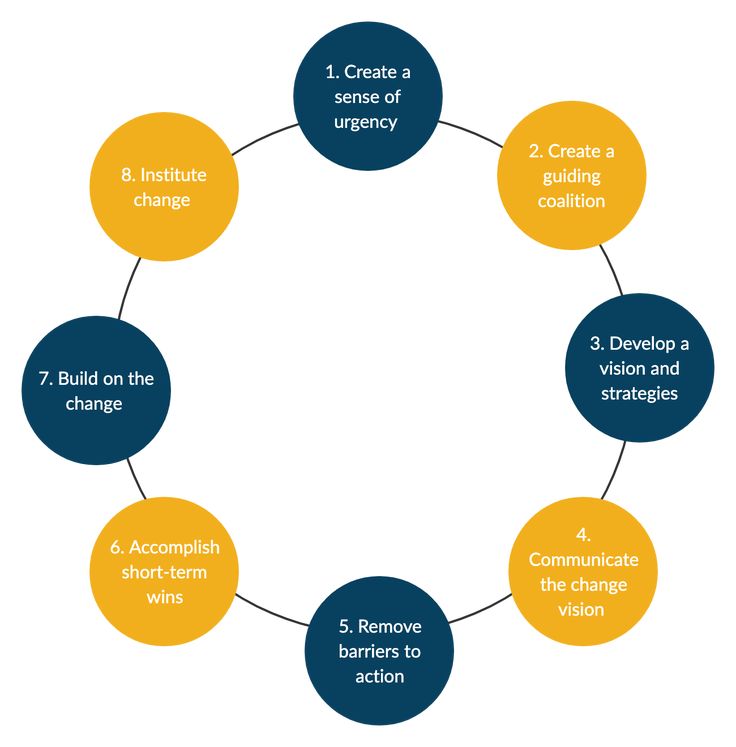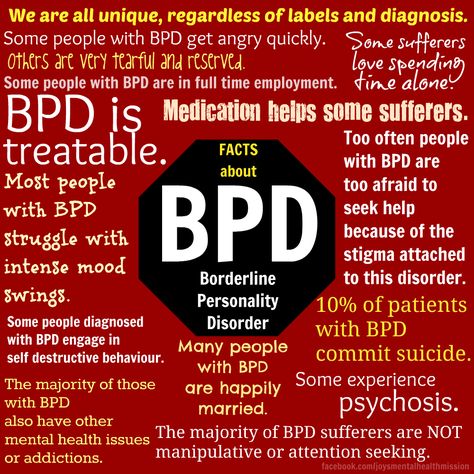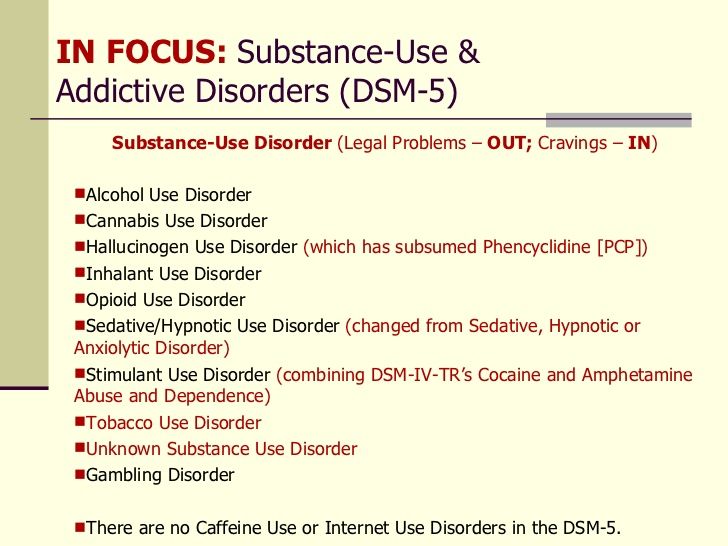The process of change
Understanding the Process of Change
Wouldn’t it be wonderful if change happened in an instant? Wouldn't it be great to wake up in the morning and think: “I want to start eating better.” And then we do. Or decide, “I am going to stop smoking” and never pick up another cigarette?
But we all know that’s not how change works. It isn’t a one-time event or singular action—instead, it is a process. And the more we understand the process of change, the more we can empathize, support, and demonstrate compassion for ourselves and those around us who seek to alter their behavior. What is the process of change?
The Transtheoretical Model of Behavior Change
The Transtheoretical Model (TTM), also commonly referred to as the Stages of Change Model, provides us with an understanding of how change occurs (Prochaska et al., 1992). Developed in the early '80s out of research with former smokers, Prochaska and DiClemente found that individuals who successfully make changes go through a series of stages over time (Prochaska & DiClemente, 2005).
In contrast to the assumption that change begins with behavior modification, Prochaska and DiClemente discovered several stages prior to taking action.
The Five Stages of Change
The first stage of the change process is marked by a lack of awareness of a problem. This stage, known as pre-contemplation, is when individuals fail to see their behavior as an issue. Others in their life may be telling them they need change, but they do not agree and have no intention of making a change in the next six months. A person in pre-contemplation may say, “It’s not my drinking that needs to change, it’s my job that is causing all my problems.” Pre-contemplation is a common starting place for many who embark upon the journey of change.
The second stage of change, contemplation, is when an individual becomes aware of the problem, but is ambivalent about making a change. They perceive the pros and cons of changing as approximately equal and thus have not committed to change.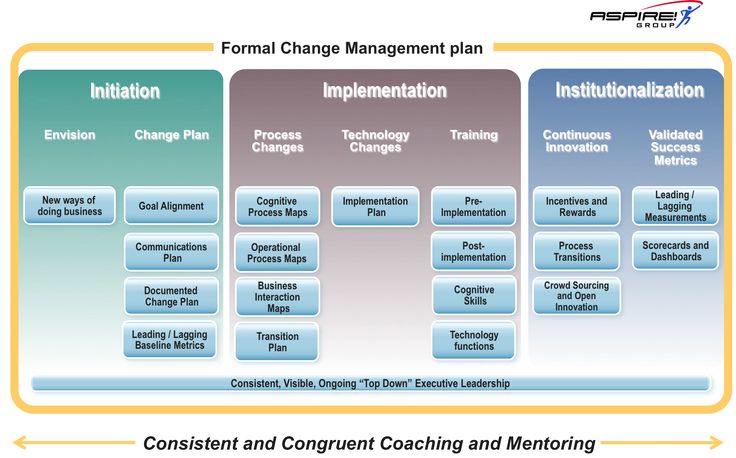 They may be considering making a change in the next six months, but currently are not ready to act. A person in contemplation may say, “I know I need to eat better, but it’s so expensive to buy fruit and vegetables. I don’t know how I would make it work.” The contemplation stage is marked by ambivalence and people can get stuck in this stage for months or years.
They may be considering making a change in the next six months, but currently are not ready to act. A person in contemplation may say, “I know I need to eat better, but it’s so expensive to buy fruit and vegetables. I don’t know how I would make it work.” The contemplation stage is marked by ambivalence and people can get stuck in this stage for months or years.
The third stage of change, preparation, is characterized by making a commitment to change. The individual intends to take action within the next month and may already be making small changes (e.g., reducing their pornography use). A person in preparation may say, “I’m ready to stop smoking. I’ve already purchased a nicotine patch and haven’t bought any more cigarettes.” Individuals in preparation are on the brink of taking action.
After the preparation stage comes action, in which individuals modify their problem behavior and make the change. In this stage, there is a strong commitment to change, and the change is intentional (i. e., self-directed) rather than imposed by others or the environment. A person in action may say, “I did it. I filled my prescription for Depakote and I have been taking it consistently for the past week.” The action stage lasts for approximately six months as the new behavior modifications are solidified.
e., self-directed) rather than imposed by others or the environment. A person in action may say, “I did it. I filled my prescription for Depakote and I have been taking it consistently for the past week.” The action stage lasts for approximately six months as the new behavior modifications are solidified.
Finally, the fifth stage of change is maintenance, in which individuals sustain their behavioral change indefinitely. During this stage, the focus is on avoiding relapse and fully integrating the behavioral change into their lives. A person in maintenance may say, “It’s been almost a year since I last used cocaine. I’ve learned how to control cravings and find support when I need it.” In maintenance, individuals learn to sustain their behavior change through various seasons of life.
The Process of Change as a Spiral
Although the five stages of change sound like a natural forward progression, this often is not the case. Anyone who has made a New Year’s Resolution that lasted until February knows that relapse (or the return to prior behavior patterns) is the rule rather than the exception.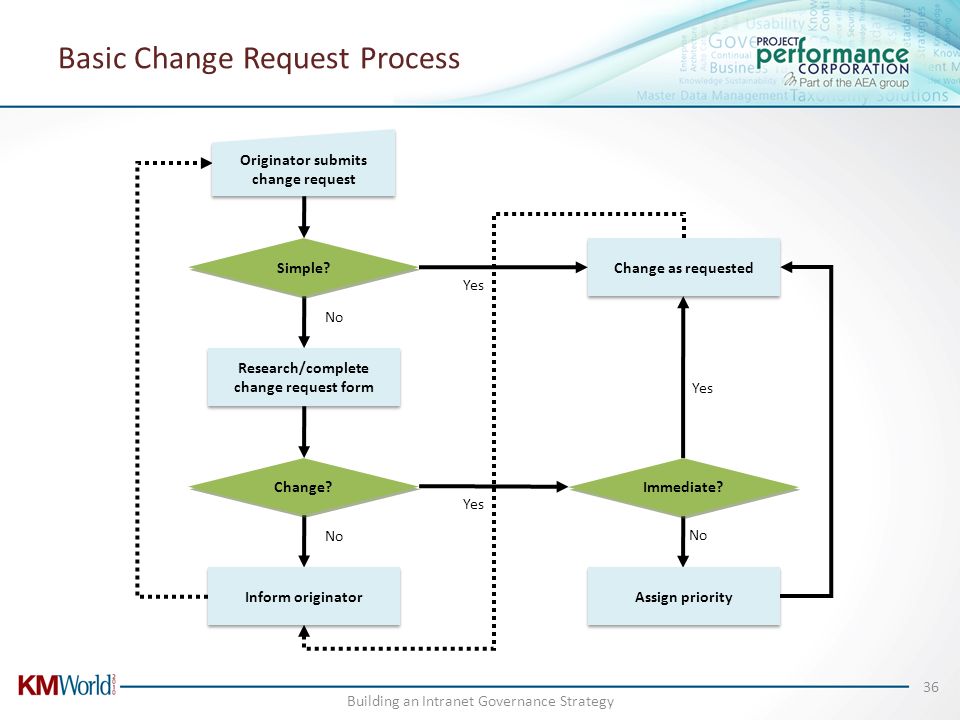 The TTM recognizes that recycling through stages is likely before individuals reach sustained maintenance (DiClemente, 2015), thus the change process is better understood as a spiral rather than a straight line.
The TTM recognizes that recycling through stages is likely before individuals reach sustained maintenance (DiClemente, 2015), thus the change process is better understood as a spiral rather than a straight line.
In addition, individuals can spend varying amounts of time in each stage, thus the process of change looks different for different people (Prochaska & DiClemente, 2005). When conceptualizing change as a process, the goal is for an individual to move from whatever stage they currently find themselves in (e.g., contemplation) to the next stage (e.g., preparation). In this way, people can acknowledge and affirm the small steps leading up to change (e.g., moving from one stage to the next), rather than waiting for the maintenance stage to celebrate.
Meeting People Where They Are
The genius of the TTM is the acknowledgment that people in one stage of change are addressing different tasks than those in another stage (Prochaska & DiClemente, 2005). For example, a person in pre-contemplation benefits from gaining insight, information, and feedback to raise awareness about their problem behavior, while a person in contemplation benefits from exploring the impact of their behavior on others, examining their emotions, and working through ambivalence. The person in preparation benefits from creating an action plan and troubleshooting, while a person in action benefits from restructuring their environment to avoid triggers and implementing replacement behaviors. Finally, a person in maintenance benefits from relapse prevention strategies and increasing overall wellness (Prochaska & DiClemente, 2005).
For example, a person in pre-contemplation benefits from gaining insight, information, and feedback to raise awareness about their problem behavior, while a person in contemplation benefits from exploring the impact of their behavior on others, examining their emotions, and working through ambivalence. The person in preparation benefits from creating an action plan and troubleshooting, while a person in action benefits from restructuring their environment to avoid triggers and implementing replacement behaviors. Finally, a person in maintenance benefits from relapse prevention strategies and increasing overall wellness (Prochaska & DiClemente, 2005).
As we learn to conceptualize change as a process, we can identify an individual’s current stage of change, meet them where they are, and help them attend to their current needs. Reaching sustained behavioral change is a journey and the more we know about the process, the more we can support one another along the way.
The Transtheoretical Model (Stages of Change)
The Transtheoretical Model (also called the Stages of Change Model), developed by Prochaska and DiClemente in the late 1970s, evolved through studies examining the experiences of smokers who quit on their own with those requiring further treatment to understand why some people were capable of quitting on their own.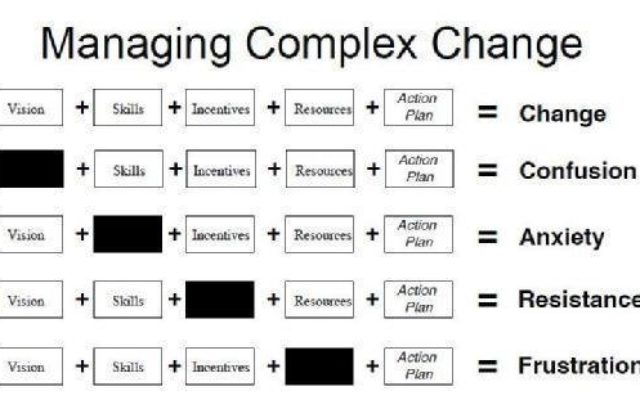 It was determined that people quit smoking if they were ready to do so. Thus, the Transtheoretical Model (TTM) focuses on the decision-making of the individual and is a model of intentional change. The TTM operates on the assumption that people do not change behaviors quickly and decisively. Rather, change in behavior, especially habitual behavior, occurs continuously through a cyclical process. The TTM is not a theory but a model; different behavioral theories and constructs can be applied to various stages of the model where they may be most effective.
It was determined that people quit smoking if they were ready to do so. Thus, the Transtheoretical Model (TTM) focuses on the decision-making of the individual and is a model of intentional change. The TTM operates on the assumption that people do not change behaviors quickly and decisively. Rather, change in behavior, especially habitual behavior, occurs continuously through a cyclical process. The TTM is not a theory but a model; different behavioral theories and constructs can be applied to various stages of the model where they may be most effective.
The TTM posits that individuals move through six stages of change: precontemplation, contemplation, preparation, action, maintenance, and termination. Termination was not part of the original model and is less often used in application of stages of change for health-related behaviors. For each stage of change, different intervention strategies are most effective at moving the person to the next stage of change and subsequently through the model to maintenance, the ideal stage of behavior.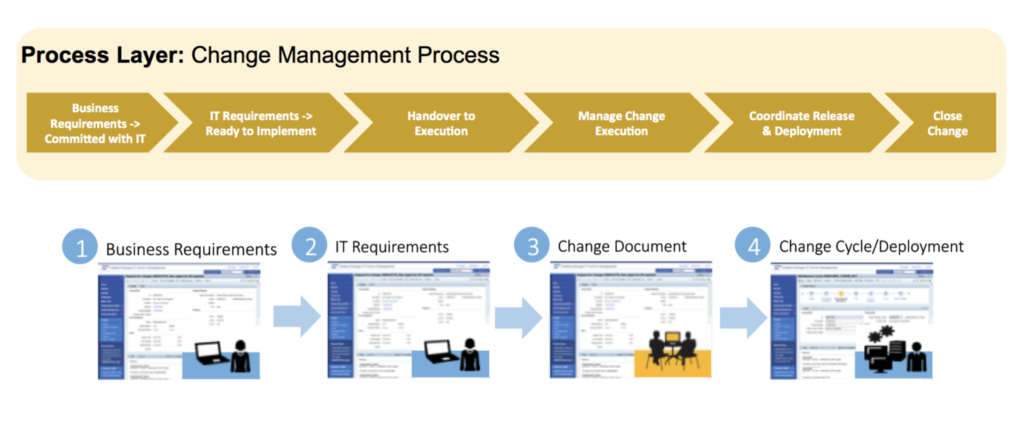
- Precontemplation - In this stage, people do not intend to take action in the foreseeable future (defined as within the next 6 months). People are often unaware that their behavior is problematic or produces negative consequences. People in this stage often underestimate the pros of changing behavior and place too much emphasis on the cons of changing behavior.
- Contemplation - In this stage, people are intending to start the healthy behavior in the foreseeable future (defined as within the next 6 months). People recognize that their behavior may be problematic, and a more thoughtful and practical consideration of the pros and cons of changing the behavior takes place, with equal emphasis placed on both. Even with this recognition, people may still feel ambivalent toward changing their behavior.
- Preparation (Determination) - In this stage, people are ready to take action within the next 30 days. People start to take small steps toward the behavior change, and they believe changing their behavior can lead to a healthier life.
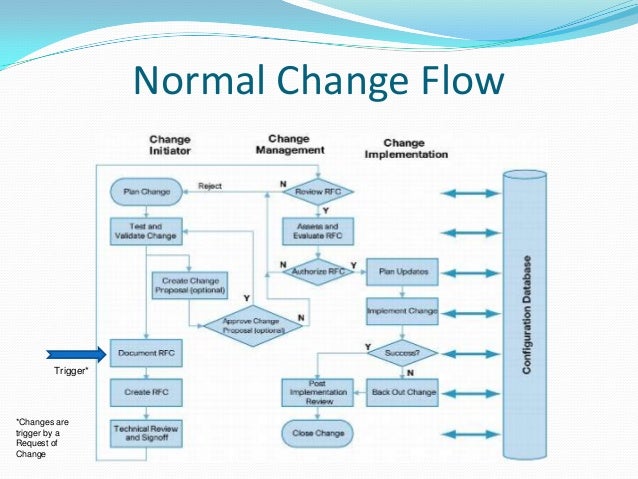
- Action - In this stage, people have recently changed their behavior (defined as within the last 6 months) and intend to keep moving forward with that behavior change. People may exhibit this by modifying their problem behavior or acquiring new healthy behaviors.
- Maintenance - In this stage, people have sustained their behavior change for a while (defined as more than 6 months) and intend to maintain the behavior change going forward. People in this stage work to prevent relapse to earlier stages.
- Termination - In this stage, people have no desire to return to their unhealthy behaviors and are sure they will not relapse. Since this is rarely reached, and people tend to stay in the maintenance stage, this stage is often not considered in health promotion programs.
To progress through the stages of change, people apply cognitive, affective, and evaluative processes. Ten processes of change have been identified with some processes being more relevant to a specific stage of change than other processes.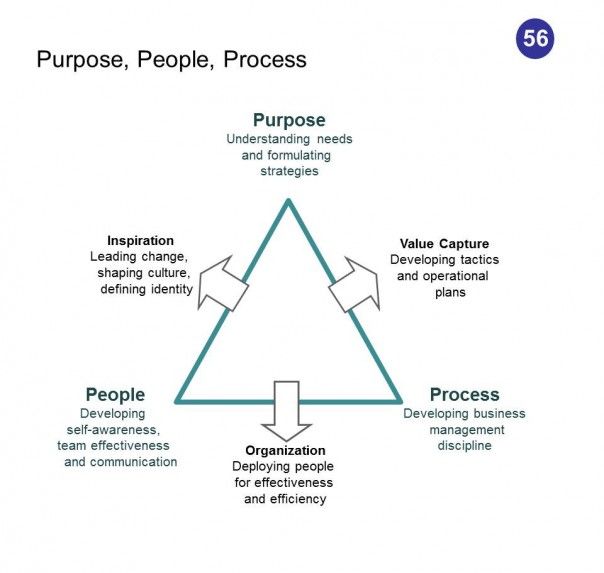 These processes result in strategies that help people make and maintain change.
These processes result in strategies that help people make and maintain change.
- Consciousness Raising - Increasing awareness about the healthy behavior.
- Dramatic Relief - Emotional arousal about the health behavior, whether positive or negative arousal.
- Self-Reevaluation - Self reappraisal to realize the healthy behavior is part of who they want to be.
- Environmental Reevaluation - Social reappraisal to realize how their unhealthy behavior affects others.
- Social Liberation - Environmental opportunities that exist to show society is supportive of the healthy behavior.
- Self-Liberation - Commitment to change behavior based on the belief that achievement of the healthy behavior is possible.
- Helping Relationships - Finding supportive relationships that encourage the desired change.
- Counter-Conditioning - Substituting healthy behaviors and thoughts for unhealthy behaviors and thoughts.

- Reinforcement Management - Rewarding the positive behavior and reducing the rewards that come from negative behavior.
- Stimulus Control - Re-engineering the environment to have reminders and cues that support and encourage the healthy behavior and remove those that encourage the unhealthy behavior.
There are several limitations of TTM, which should be considered when using this theory in public health. Limitations of the model include the following:
- The theory ignores the social context in which change occurs, such as SES and income.
- The lines between the stages can be arbitrary with no set criteria of how to determine a person's stage of change. The questionnaires that have been developed to assign a person to a stage of change are not always standardized or validated.
- There is no clear sense for how much time is needed for each stage, or how long a person can remain in a stage.
- The model assumes that individuals make coherent and logical plans in their decision-making process when this is not always true.
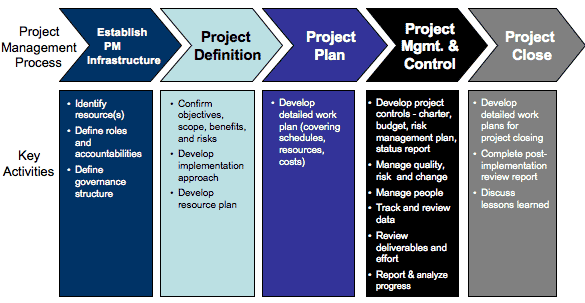
The Transtheoretical Model provides suggested strategies for public health interventions to address people at various stages of the decision-making process. This can result in interventions that are tailored (i.e., a message or program component has been specifically created for a target population's level of knowledge and motivation) and effective. The TTM encourages an assessment of an individual's current stage of change and accounts for relapse in people's decision-making process.
return to top | previous page | next page
ITIL Change Management Process, Guidelines, Roles, Metrics, and KPIs, examples
ITIL Change Management Process, Guidelines, Roles, Metrics, and KPIs, examples
ServiceDesk Plus FunctionsChange Management in ITIL Change Management Guide
An Introduction to Change Management in ITIL
With the business environment and customer expectations constantly changing, digital transformation is becoming a key success factor for businesses across all industries.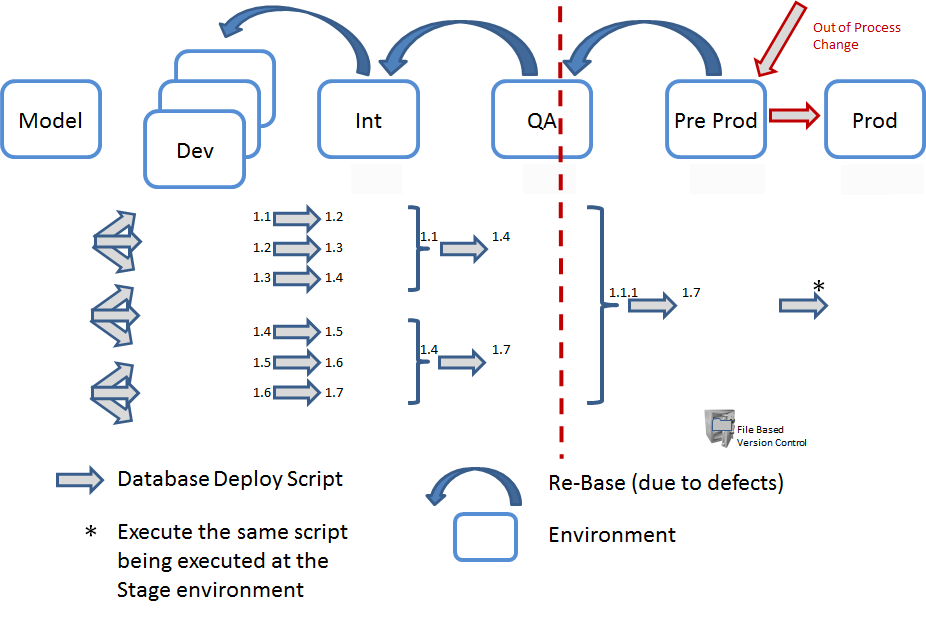 It allows you to solve business problems and seize emerging opportunities through the effective use of technology. At its core, digital transformation is the improvement of IT governance to address problem areas and provide the IT infrastructure with the tools to meet business challenges. All of this involves implementing changes in IT that help the organization apply new technologies to existing business and IT processes.
It allows you to solve business problems and seize emerging opportunities through the effective use of technology. At its core, digital transformation is the improvement of IT governance to address problem areas and provide the IT infrastructure with the tools to meet business challenges. All of this involves implementing changes in IT that help the organization apply new technologies to existing business and IT processes.
Changes can be as simple as moving enterprise applications to the cloud to make them more efficient, or shifting the focus to mobile applications to improve user experience. Despite their apparent simplicity, these changes are not without certain logistical difficulties. Implementing the change incorrectly can cause your organization more trouble than it's worth.
The unsuccessful update of the mobile application of a well-known bank in December 2018 is a good example of how not to implement changes. The bank planned to introduce a new and improved mobile banking application, and it was a great and much needed idea.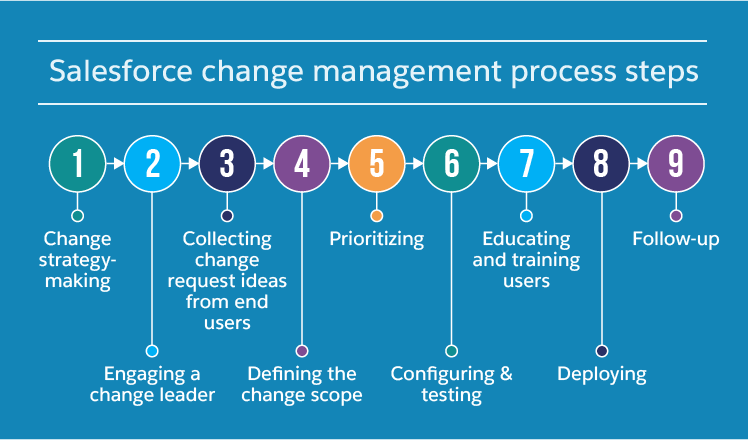 However, from the very moment the new application was launched, problems began. The bank introduced the new application after the termination of the old one. When the new app didn't work, thousands of customers lost the ability to access their bank accounts through the app. The situation was aggravated by the fact that there was very little information about the fix for the new application, which caused customer dissatisfaction. The mobile application did not work for four days, and only after that the bank decided to return the old application.
However, from the very moment the new application was launched, problems began. The bank introduced the new application after the termination of the old one. When the new app didn't work, thousands of customers lost the ability to access their bank accounts through the app. The situation was aggravated by the fact that there was very little information about the fix for the new application, which caused customer dissatisfaction. The mobile application did not work for four days, and only after that the bank decided to return the old application.
We see that the bank made mistakes at various stages of the proposed change: releasing the new application when it was not yet ready for deployment, not providing transparent information to end users about the downtime associated with the update, and not developing an alternative contingency plan in case of failure. This is definitely not the best way to implement changes.
It is for situations like this that change management is needed.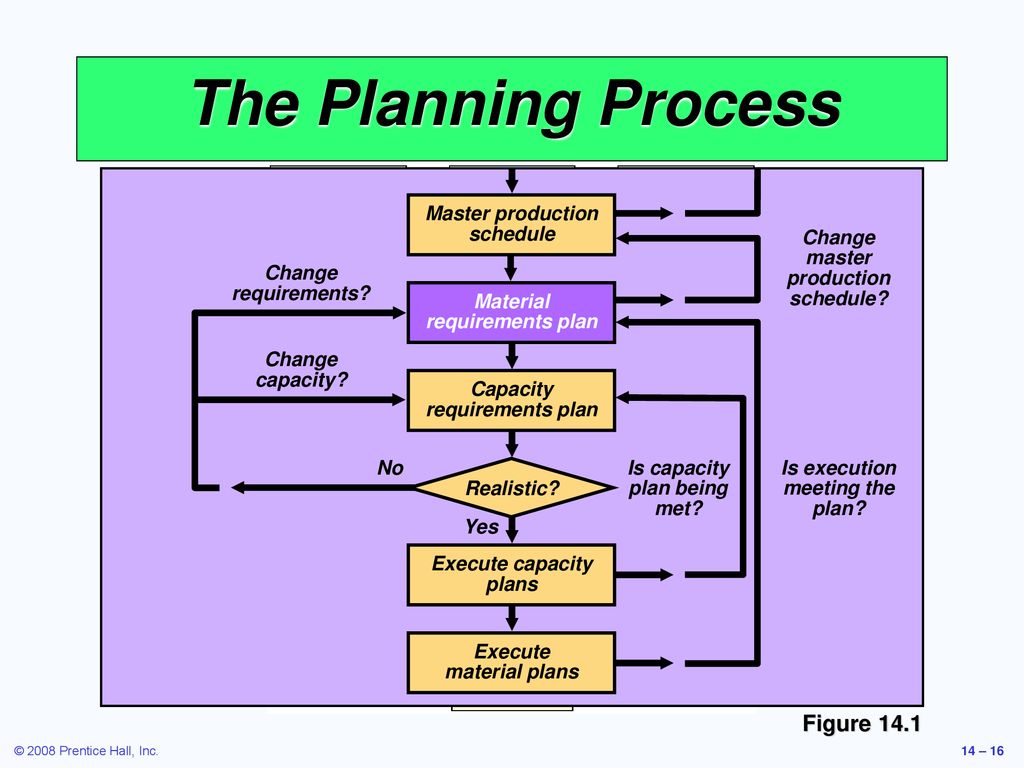 It helps manage all the various changes in your organization and ensures that the change process is efficient without impacting the rest of your organization. Change management reduces the likelihood of disruptions like those experienced by the bank.
It helps manage all the various changes in your organization and ensures that the change process is efficient without impacting the rest of your organization. Change management reduces the likelihood of disruptions like those experienced by the bank.
This guide discusses the nature, causes and methods of change management. You'll learn how to help your organization stay on top of industry trends by effectively implementing change.
Let's get started!
Essentials
What is change management?
ITIL describes change management as the process of tracking and managing changes throughout their lifecycle, from inception to closure, in order to minimize risk.
An established, systematic change management process helps organizations implement change without incident and with a high probability of success.
What is change?
According to ITIL, a change is "the addition, modification, or removal of anything that may directly or indirectly affect services.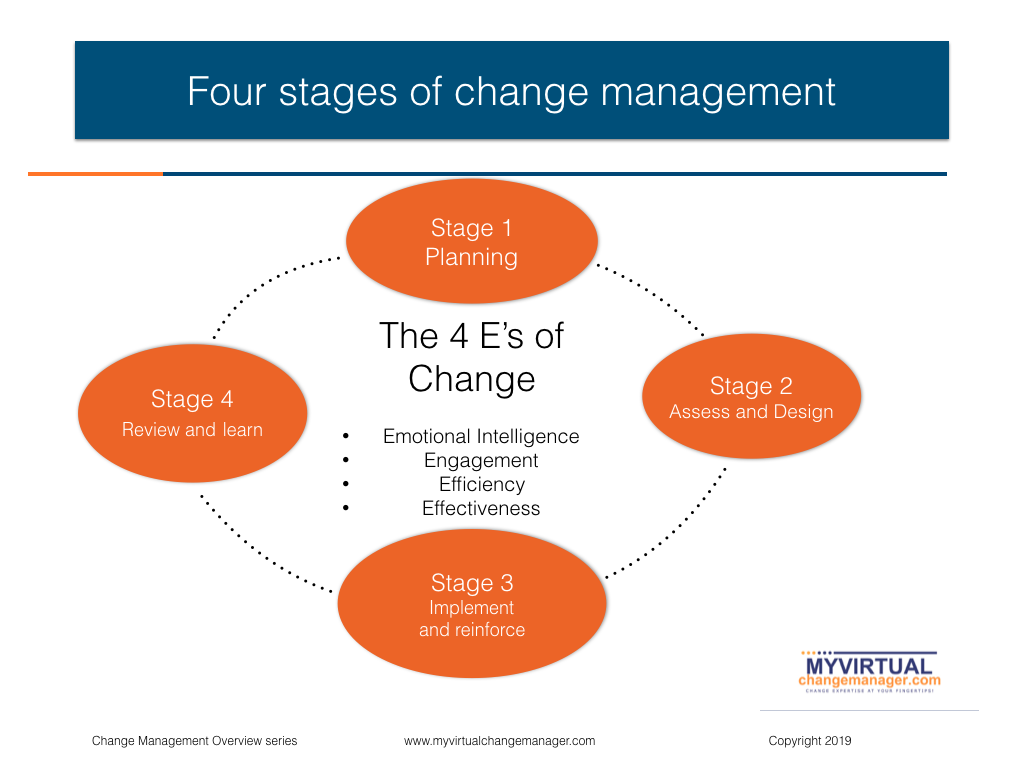 "
"
At its simplest, an IT change is any change to an organization's IT infrastructure that can affect how the organization operates. This includes replacing printers, projectors, servers, etc.
What is the difference between an incident, a problem and a change?
| Incident | Problem | Change | |
|---|---|---|---|
| Definition | According to ITIL, an incident is "an unplanned interruption or degradation of service" | According to ITIL, a problem is “the cause or potential cause of one or more incidents” | According to ITIL, a change is "the addition, modification, or removal of anything that may directly or indirectly affect services." |
| Task | Restore normal service operation as soon as possible | Determining the root cause of a service interruption | Implementing a Root Cause Change to Prevent Further Service Interruptions |
| Character | Reactive | Proactive and reactive | Proactive and reactive |
| Example | Users cannot connect to the network. A workaround has been released to resolve the incident and allow users to access the network A workaround has been released to resolve the incident and allow users to access the network | A problem ticket has been created for root cause analysis (RCA). The incident was caused by a network switch failure. Need to replace switch | A change request has been created to replace a failed switch. |
Reasons
Why do organizations need change management?
Having understood what change management is, let's now look at why organizations need it. Let's start with the goals of change management.
ITIL change management objectives
Enabling organizations to control and manage their changes
Change management allows you to better control the process of implementing changes and helps you implement changes with a minimum of risk. Through the use of standard processes, change management ensures that all aspects of each change are effectively managed, such as planning, risk assessment, and implementation tracking.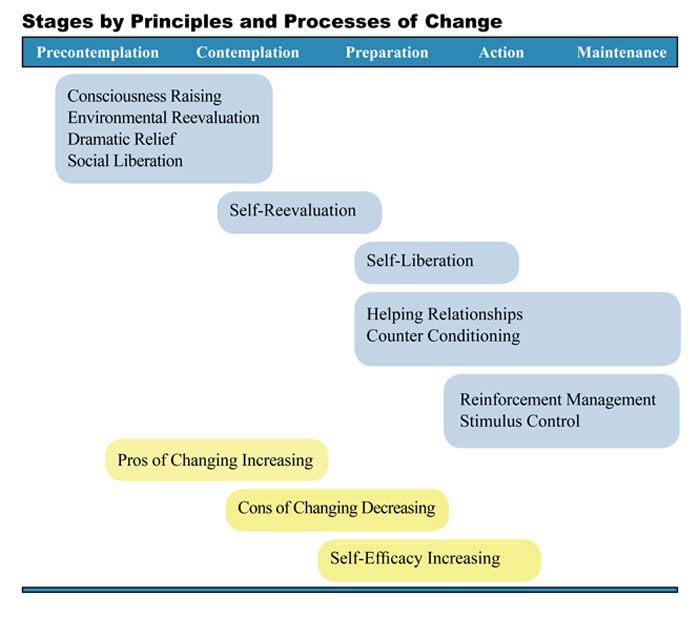 Using help desk tools to track changes from start to finish can do wonders and enable an organization to more effectively manage its IT infrastructure through well-planned and well-executed changes.
Using help desk tools to track changes from start to finish can do wonders and enable an organization to more effectively manage its IT infrastructure through well-planned and well-executed changes.
Help organizations improve the efficiency of change implementation
By tracking the entire change process, change management provides organizations with the ability to control all change requests. It also makes it easier to identify and reduce unresolved changes. By allowing users to submit Change Requests (RFCs) only through the Help Desk tool, organizations can collect all the necessary information about a change from the very beginning, and then decide whether to implement it. A well-functioning approval mechanism ensures that all necessary permissions for a change are obtained before it is implemented.
Ensuring continuous improvement
Change management is not a life saver. Its goal is to help organizations continuously improve their infrastructure and processes, and keep pace with industry trends, by ensuring that necessary changes can be seamlessly implemented without impacting ongoing service operations.
Benefits of change management
For an organization:
- reduction in change conflicts through effective change management;
- the ability to perform updates without affecting operation;
- reduction in the number of failed changes;
- clear classification of changes.
For end users:
- improved communication about downtime and unavailability of services due to planned changes;
- Services run more smoothly with fewer interruptions caused by poorly planned changes.
Methods
How do organizations manage change?
Consider how you can implement change management in your organization. The first step is to establish an effective change implementation process that allows you to plan for the change, obtain the necessary approvals, and implement the change. The change management process described below ensures effective change management.
Change Management Process
Step 1 Submit
The first stage is the initiation of the change.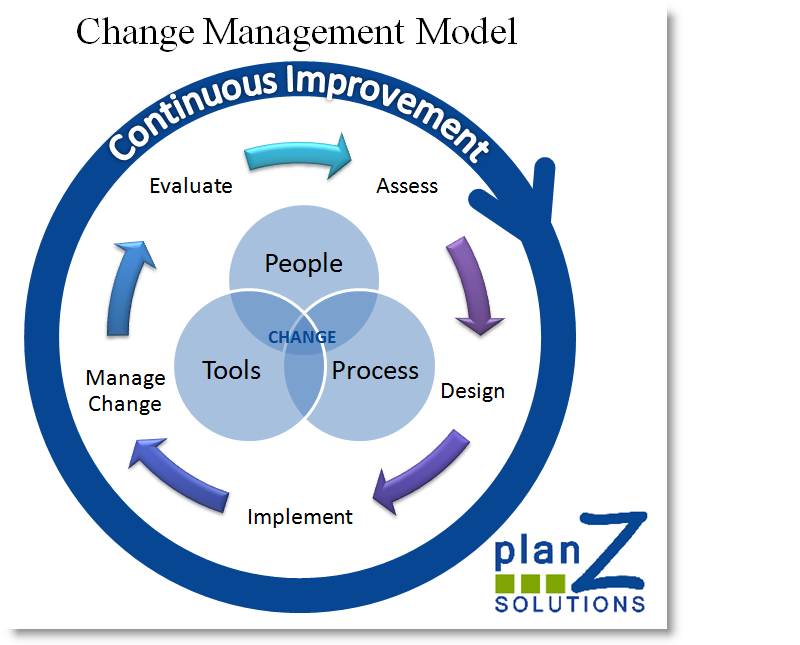 This includes gathering basic information about the change request, such as the type and priority of the change.
This includes gathering basic information about the change request, such as the type and priority of the change.
- Creation : Change tickets are created in the help desk tool. The required information is collected from the very beginning using a change form containing the required fields.
- Defining change roles : With change roles, organizations can delegate change-related responsibilities to different participants in the process and control the access level of each role at each stage of the change implementation.
Step 2: Planning
The next step is planning the entire change process. Careful planning of change is the key to its successful implementation. It is also important to obtain the approvals required to implement the change. Information such as impact, roll-out plans, return plans, and associated downtime should be documented to provide process participants with clear information about the change plan and to convince them that it is appropriate.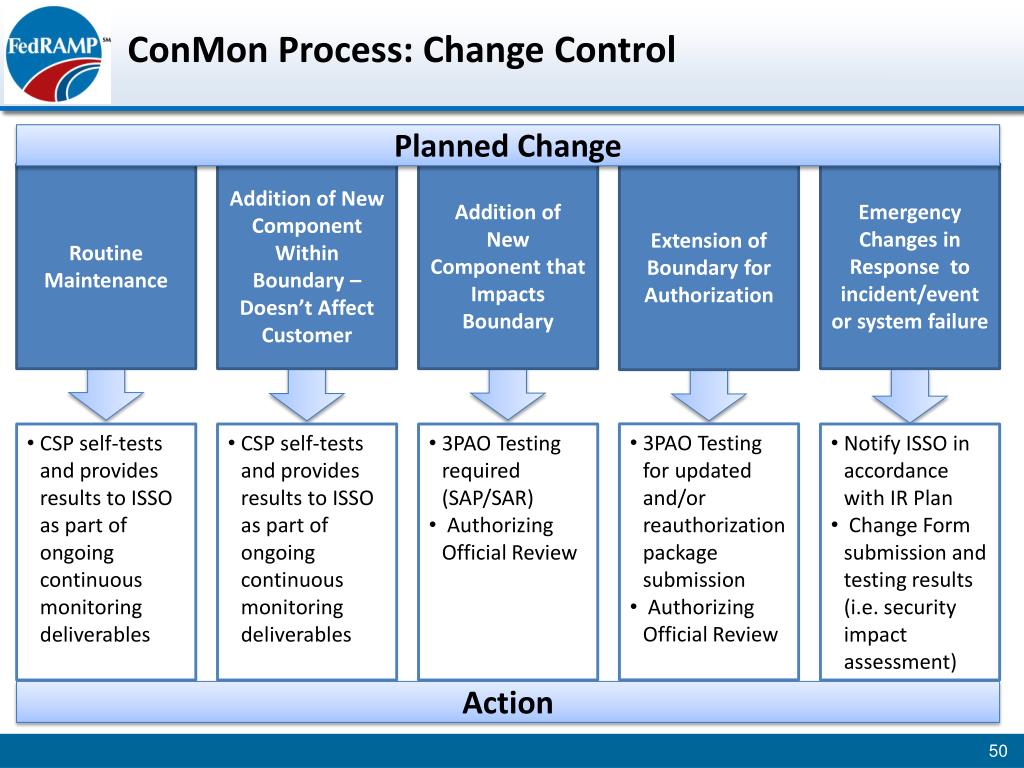
Step 3: Approval
The change plan must then be approved by the Change Experts Panel (CAB), the Emergency Change Experts Panel (ECAB), and other bodies responsible for the change or the organization's infrastructure affected by the change. Creating dedicated CABs helps organizations bring together the right people and manage approvals with ease. Automating the approval process speeds up change execution and ensures that no approval requests are missed.
Note. CAB is a combination of different roles and groups. This may include senior management, team leaders, technical teams, finance staff, and others, depending on the severity and scale of the change.
Step 4: Implement
Once you have received the required changes, you can start implementing the change. Organizations can track and control the implementation of changes by creating tasks or using projects.
- Delegate work through tasks. : Tasks are created and assigned to different technicians from different departments to easily manage the work done by all the people involved in implementing the change.
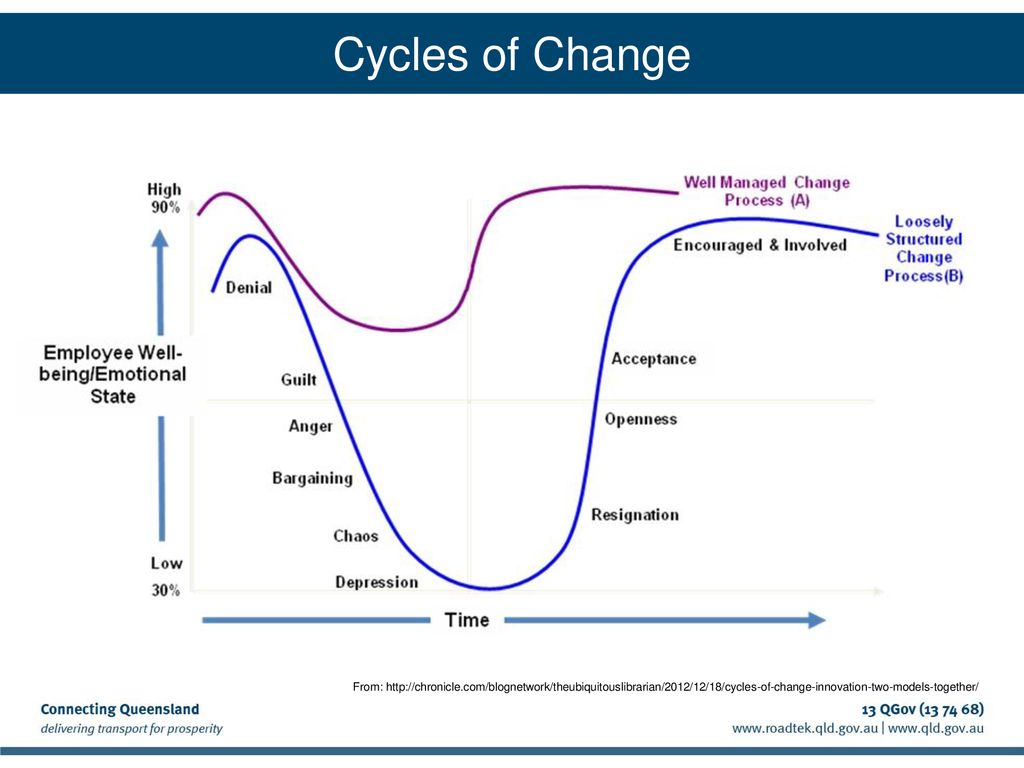 You can use parent and child tasks to set task dependencies and ensure that tasks run in a specific order and there are no skipped tasks.
You can use parent and child tasks to set task dependencies and ensure that tasks run in a specific order and there are no skipped tasks. - Using project management. : Organizations can use projects to deal with large-scale change, such as moving an organization's entire infrastructure to the cloud. Projects support a broader scope of implementation work and allow for better management of more tasks, people, and milestones. Good integration between change management and project management can be very beneficial for an organization.
Step 5: Review
A post-implementation review is then performed to ensure that no deviations occurred during implementation and that any issues are resolved before the change is closed.
Step 6: Close
This is the last step in the change management process. The nature of the change performed is recorded: successful, unsuccessful, or incomplete. Recording an appropriate closure code improves the accuracy and usefulness of an organization's performance.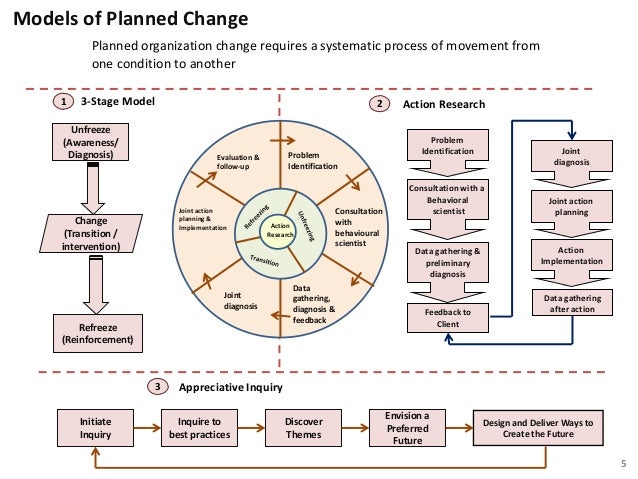
Types of changes in ITIL
Not all changes are the same, some have special requirements. Some changes need to be implemented as quickly as possible, others require the approval of the top management of the organization, and some are just regular changes implemented every week.
According to ITIL, changes can be broadly classified into three types: standard, routine, and emergency.
Standard Changes
These are pre-approved changes with little impact, study, and detailed documentation. The first implementation of standard changes requires a risk assessment and authorization, but subsequent implementations may be made without these precautions provided that the change has not been modified.
Example: replacing an ink cartridge in a printer.
Regular changes
To implement a normal change, you must follow the entire change process; it needs planning, risk assessment and permission. Typical changes include both minor (with low or medium impact and urgency) and major (with high impact and urgency). All changes that are not classified as standard or emergency should be treated as normal changes and implemented in accordance with the change implementation process.
All changes that are not classified as standard or emergency should be treated as normal changes and implemented in accordance with the change implementation process.
Example: migrating on-premises services to the cloud.
Emergency Changes
Emergency Changes have a high level of impact and urgency and require an expedited evaluation, approval, and implementation process to restore services as quickly as possible. Changes to components that affect the operation of the business and thus can cause downtime are considered an emergency change.
Examples: core server failure, data center outage, hot fix for a security vulnerability.
Roles and Responsibilities in Change Management
Change Owner
Change Owner is responsible for the entire change management process, including its improvement. Since this role implies responsibility for managing change throughout the organization, it is usually filled by a senior official.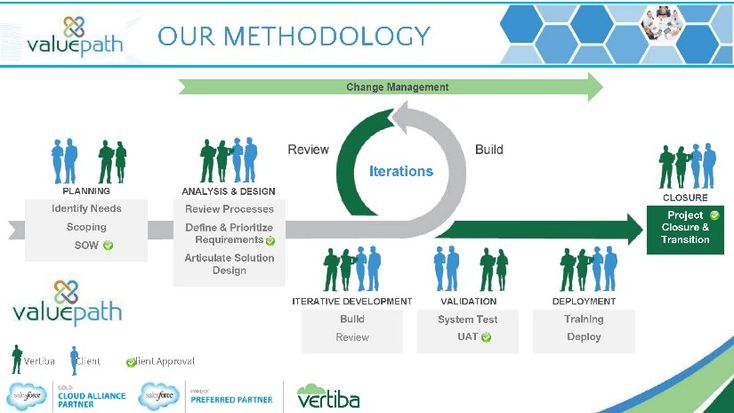
Change Manager
The Change Manager manages the implementation of the change and associated activities. He also manages the CAB and various groups and participants in the process, coordinating their work.
Change Initiator
Change Initiator is the person who creates the change and adds the change plans, implementation plans, and other required information. He also draws up a plan for implementing the change. The initiator of the change can be either a technician or an end user.
CAB:
The CAB is made up of various members with different functional responsibilities from different departments. Together they review the proposed change and issue approval and recommendations for the change and its implementation.
Additional roles
In addition to these four core roles, some organizations use their own roles to delegate work tasks and assign responsibilities. The ability to create custom roles helps you tailor your change management process to your organization's needs.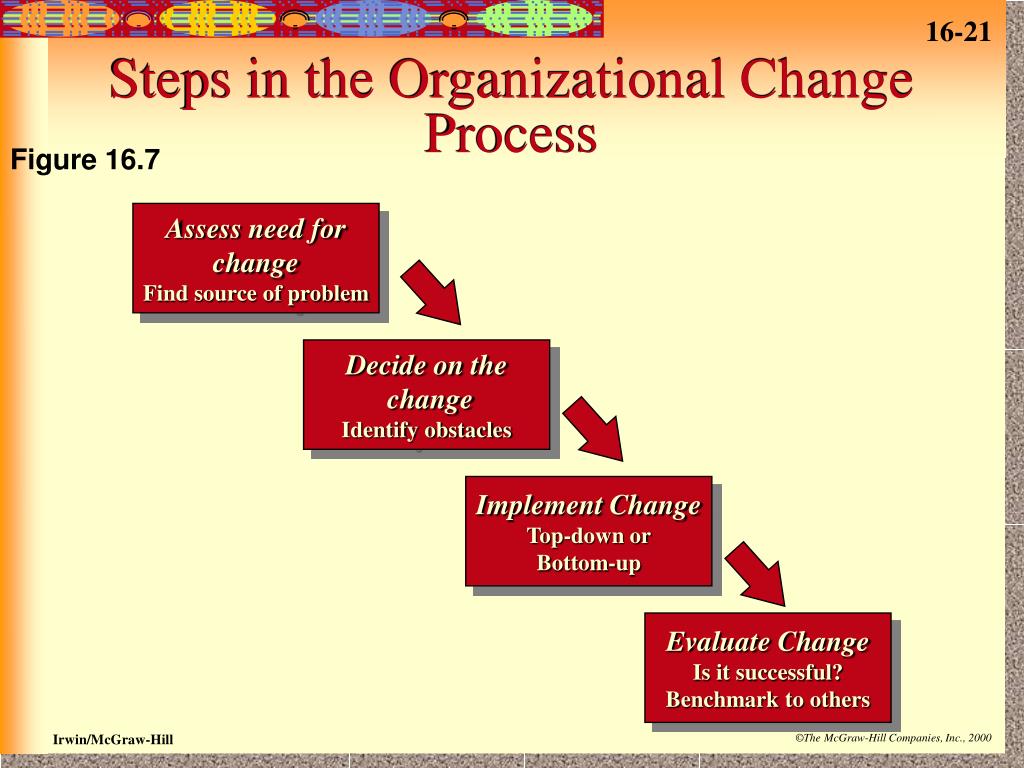 The following additional roles are often used:
The following additional roles are often used:
- Change Approver
- Responsible for implementing change
- Responsible for reviewing change
- Responsible for change planning
4 common problems in change management
Let's look at four common problems that can make change management difficult.
-
Unsuccessful changes
Changes take a lot of resources, and planning them takes time and searching for information. A large number of unsuccessful changes can be costly for an organization if the situation is not corrected in time. In the case of infrastructure changes, a high failure rate can lead to more serious problems during the implementation of either the change itself or the rollback plan. A high number of failed changes is also indicative of a poorly organized change management process.
Example: Zylker was planning to upgrade its primary network infrastructure, so it set up an alternate network through a third-party network provider.
 Implementation of the change was scheduled for the weekend. During implementation, Zylker received service downtime tickets, which was unexpected as the company set up an alternate network. As it turns out, the alternate network service provider was also performing scheduled maintenance over the same weekend, causing both Zylker's primary and alternate networks to be down and Zylker services unavailable. The change was ultimately unsuccessful due to insufficient planning.
Implementation of the change was scheduled for the weekend. During implementation, Zylker received service downtime tickets, which was unexpected as the company set up an alternate network. As it turns out, the alternate network service provider was also performing scheduled maintenance over the same weekend, causing both Zylker's primary and alternate networks to be down and Zylker services unavailable. The change was ultimately unsuccessful due to insufficient planning. -
Unauthorized changes
Unresolved changes are the result of an inefficient work of the approval mechanism and the absence of the necessary participants at the approval stage. These changes bypass required permissions and may eventually be implemented if not detected in time. Unauthorized changes can result in an organization making an unnecessary or untimely change. Therefore, unauthorized changes are undesirable and lead to unnecessary costs.
-
Too many emergency changes
As previously stated, emergency changes require expedited approval in order to implement as soon as possible.
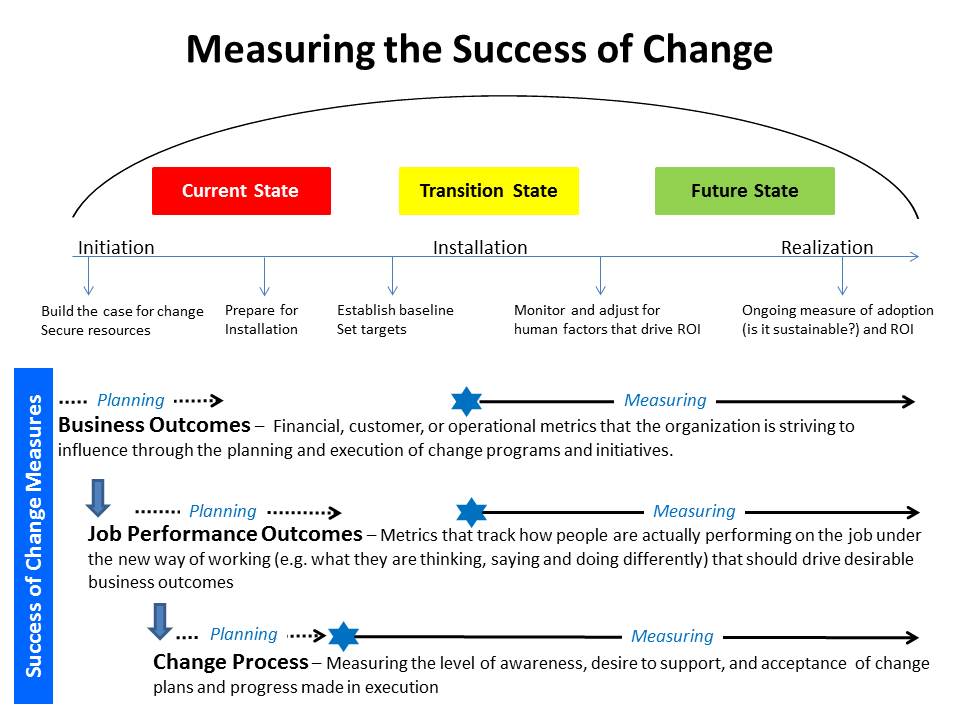 Treating too many changes as emergency can lead to delays if a major emergency change needs to be implemented. It is worth very carefully approaching the transfer of changes to the category of emergency.
Treating too many changes as emergency can lead to delays if a major emergency change needs to be implemented. It is worth very carefully approaching the transfer of changes to the category of emergency. Note. The famous parable of the boy who yelled “Wolf!” is a good analogy for understanding the consequences of a situation where too many changes are considered urgent. In a truly emergency situation, your organization may not appreciate the change, and you may not have the resources needed to implement it.
-
Change conflicts
Poor planning can lead to change conflicts. A change conflict is a situation in which the implementation of two or more changes is inadvertently scheduled at the same time, which prevents the implementation of one of them. Using a change calendar to schedule changes can help prevent change conflicts.
10 Change Management Tips
Here are some change management tips.
-
Define the types of changes
Not all changes are the same.
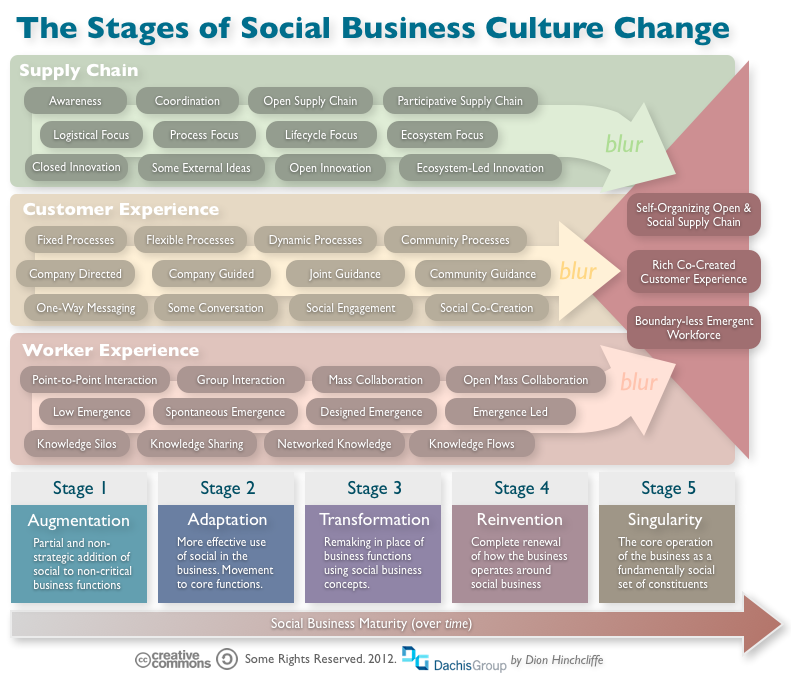 As explained in the Types of Changes section, changes have different priorities and different requirements. Therefore, it is important to first determine what types of change your organization can implement, and then create different types of changes to effectively implement them.
As explained in the Types of Changes section, changes have different priorities and different requirements. Therefore, it is important to first determine what types of change your organization can implement, and then create different types of changes to effectively implement them. -
Develop separate processes for different types of change
Because different types of changes have specific unique requirements, unique processes must be developed to meet those requirements. Using the same process for all types of changes will only lead to unnecessary delays and incomplete implementation of the changes.
Note. You can create different change workflows for each type of change.
-
Define key roles and responsibilities
Defining roles allows the change manager to delegate tasks and responsibilities to other people. Roles simplify change management and clearly define the tasks that each employee can perform.
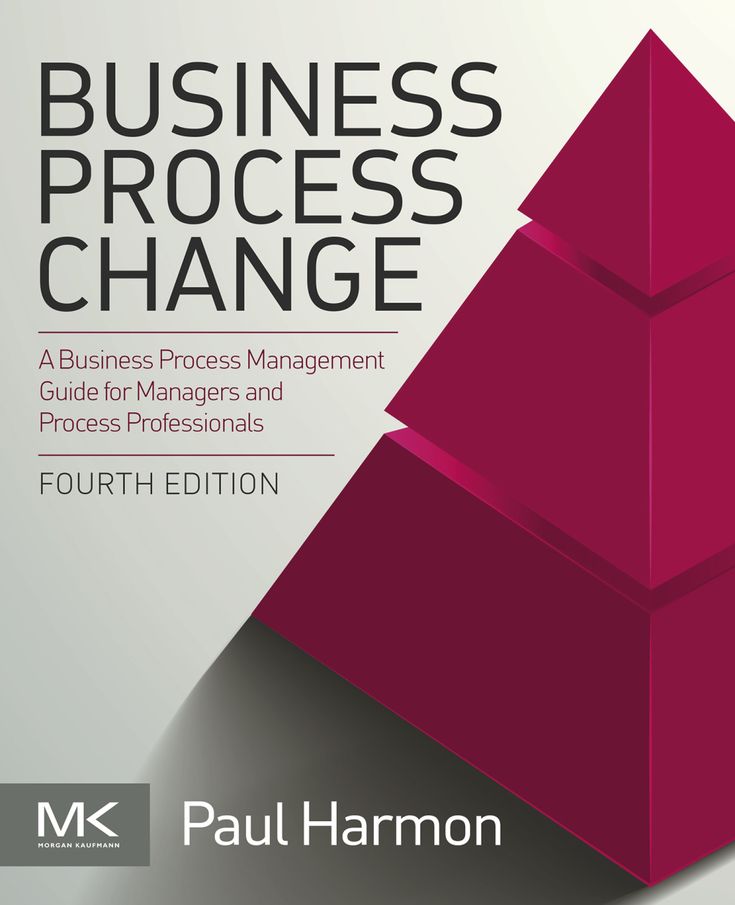
-
Log and manage proposed changes and give them priority
It is best when the process of registering, managing and prioritizing changes is organized and centralized. Visualization of changes in your organization allows you to prioritize changes that need to be done before others.
-
Get a clear understanding of the risks and impact of change
For all changes, a risk and impact analysis should be performed to obtain more information about the change and allocate the necessary resources. Risk and impact details should be added during the planning phase so that the CAB has a clear understanding of the change and can make recommendations.
-
Create an effective approval mechanism
Defining an approval process makes it easier to obtain the permissions needed to implement a change. It ensures that all key stakeholders in the process are informed about the change and receive their advice before the change is implemented.
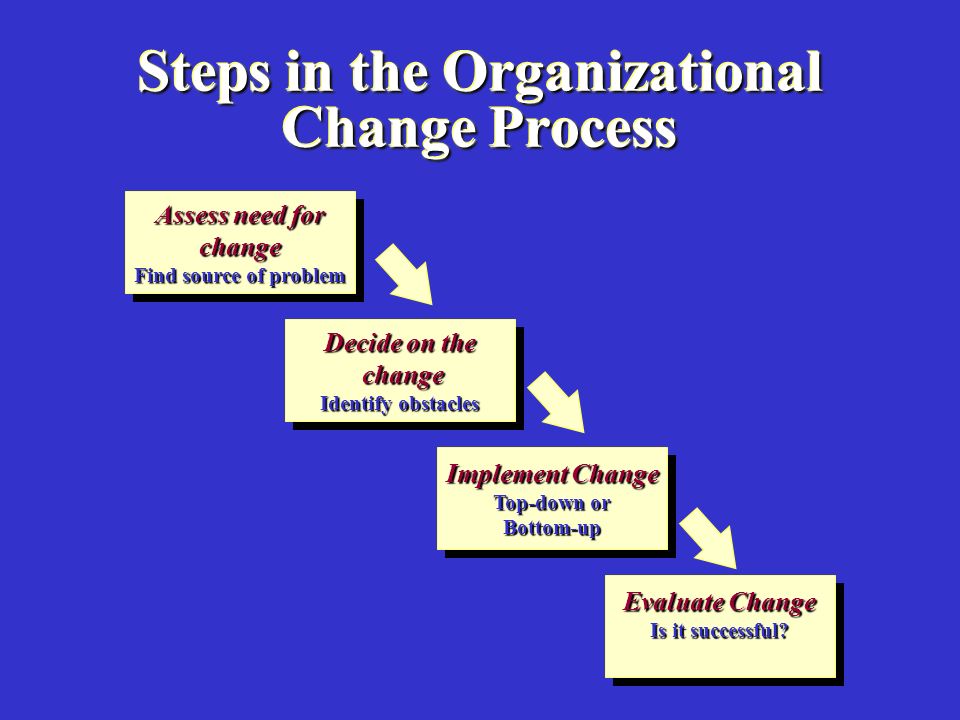 This helps to reduce the number of unauthorized changes.
This helps to reduce the number of unauthorized changes. -
Keep process participants informed about schedules and downtime
Keeping process participants aware of planned changes reduces the number of incidents caused by changes. By providing timely information, changes do not impact services and can be implemented efficiently. In addition, management also likes to keep abreast of developments throughout the change life cycle.
-
Measure the progress and effectiveness of change implementation
Controlling the implementation of a change throughout its life cycle allows you to avoid deviations and implement the change in accordance with the change plan. Measuring key metrics gives a clear picture of the effectiveness of the change process and allows you to identify areas for improvement.
-
Have a contingency plan in place
You can't prepare too well, so it's a good idea to consider the worst-case scenario and develop a contingency plan during the change planning phase.
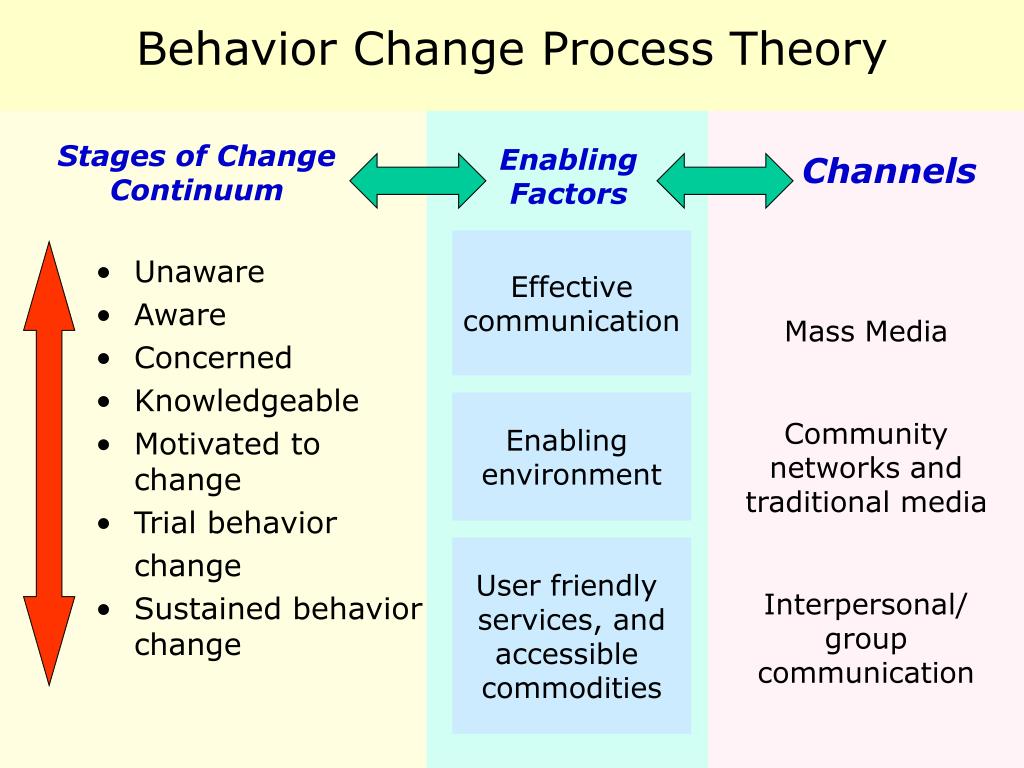 This kind of careful planning makes it possible to turn into an ordinary bad change that would otherwise cause irreparable damage to your IT infrastructure.
This kind of careful planning makes it possible to turn into an ordinary bad change that would otherwise cause irreparable damage to your IT infrastructure. -
Continuously improve services
Disaster management is a critical change management function, but far from the only one. Leveraging change to improve technology and processes and thereby continuously enhance your organization's ability to deliver better services becomes an important function of change management.
How does change management fit into the overall IT service management framework?
Change management is not limited to making a change. The effectiveness of change implementation through change management can be greatly improved by using information gained from other ITSM processes, and vice versa. The ability to link incidents to the changes that caused or caused them, or the ability to update the CMDB based on changes in the IT infrastructure, are only the first steps in creating a coherent ITSM system that works in concert to help you manage your organization more effectively.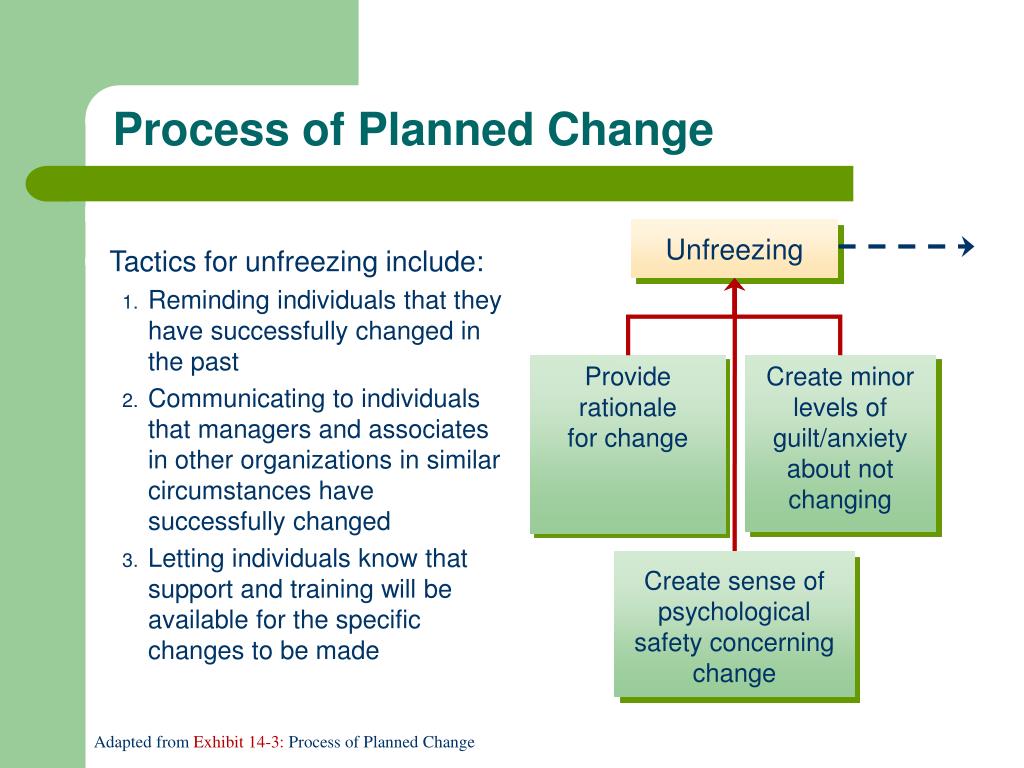
Consider how change management can be combined with other ITSM processes.
-
Incident management
Tracking incidents that caused change and that caused change gives you a clearer picture of how changes affect your organization. For example, during a router upgrade, you may receive incident tickets reporting Internet downtime. Establishing a link between changes and the incidents they cause helps to quickly identify the cause of an incident and refrain from committing resources to fix that particular incident, as it will be fixed once the change is complete.
-
Execution of requests
It is important to use changes when performing high-impact service requests to keep your IT infrastructure up to date. Without change, work on a Server Upgrade Service Request or an Azure Storage Extension Request will end with the service. But when you use a change to complete a service request, you can collect more information, such as the reason for the change and the implementation plan, obtain the necessary approvals from all participants in the process, and update the CMDB with the new information.
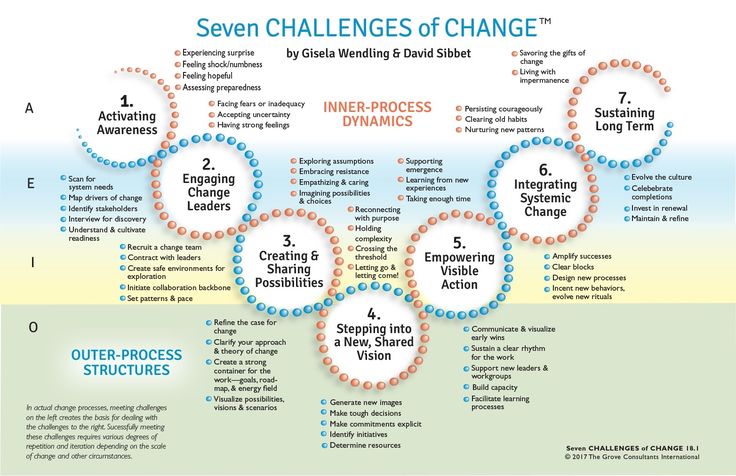
Note. Using changes to fulfill requests is best for high-impact service requests and any service requests that require a CMDB change. If an update to the CMDB is required, then there is a need for a change!
-
Problem management
Problem management involves creating a change to address the root cause of a problem. The ability to create an RFC right in an issue ticket makes it easier to track related changes and issues. It also gives the CAB a clearer understanding of the reasons for the change and an indication of the severity of the problem that caused the change.
-
Managing releases and deployments
The structured approach used by the change process is useful when performing upgrades to releases and deployments. It makes it easy to track implementation plans, roll-out plans, and the actual implementation of releases and deployments through changes. The transparency and visibility offered by the changes also helps to keep everyone involved in the process informed.
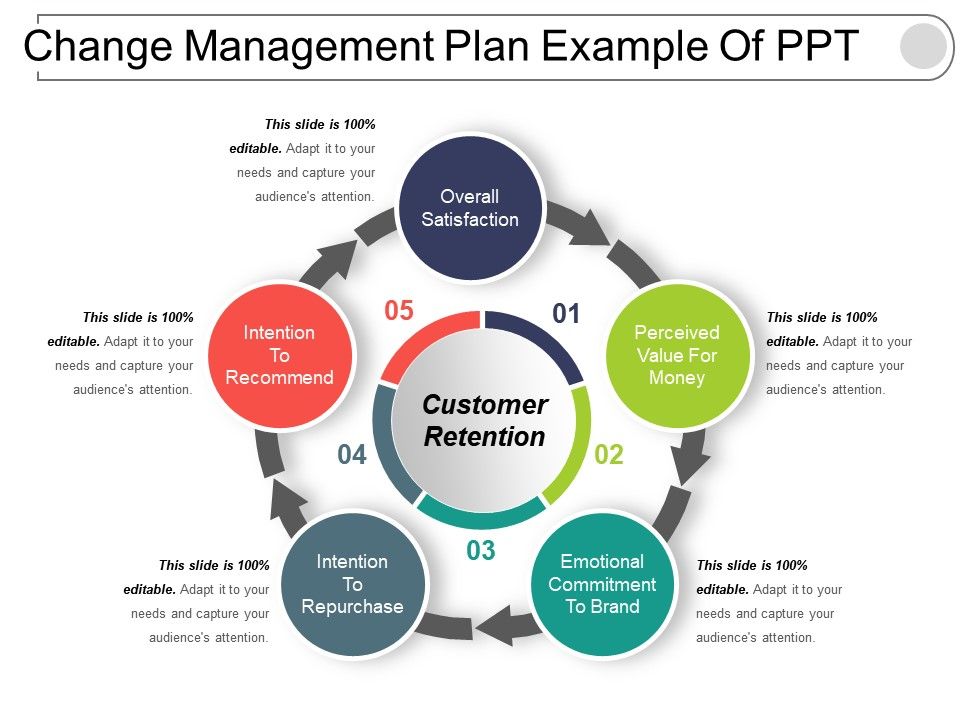
-
CMDB:
Any updates to the CMDB should always be done with changes. The changes provide a wealth of useful information about why, how, and when the upgrade was performed. Impact analysis performed during the change process also ensures that all CMDB updates are properly analyzed and prevents the rest of your organization from being disrupted by the update. You can use different types of changes to register CMDB updates with different priorities.
Change Management Key Performance Indicators
Below are some important metrics to measure the effectiveness of the change management process.
| KPI | Formula | Comments |
|---|---|---|
| Number of unauthorized changes | Number of unresolved changes detected in a given period of time | A low value indicates the robustness of the approval process and the ability to manage all changes |
| Number of high impact service requests completed without change | Number of high-impact service requests completed without change in a given time period | Service requests with high impact should be completed using a change.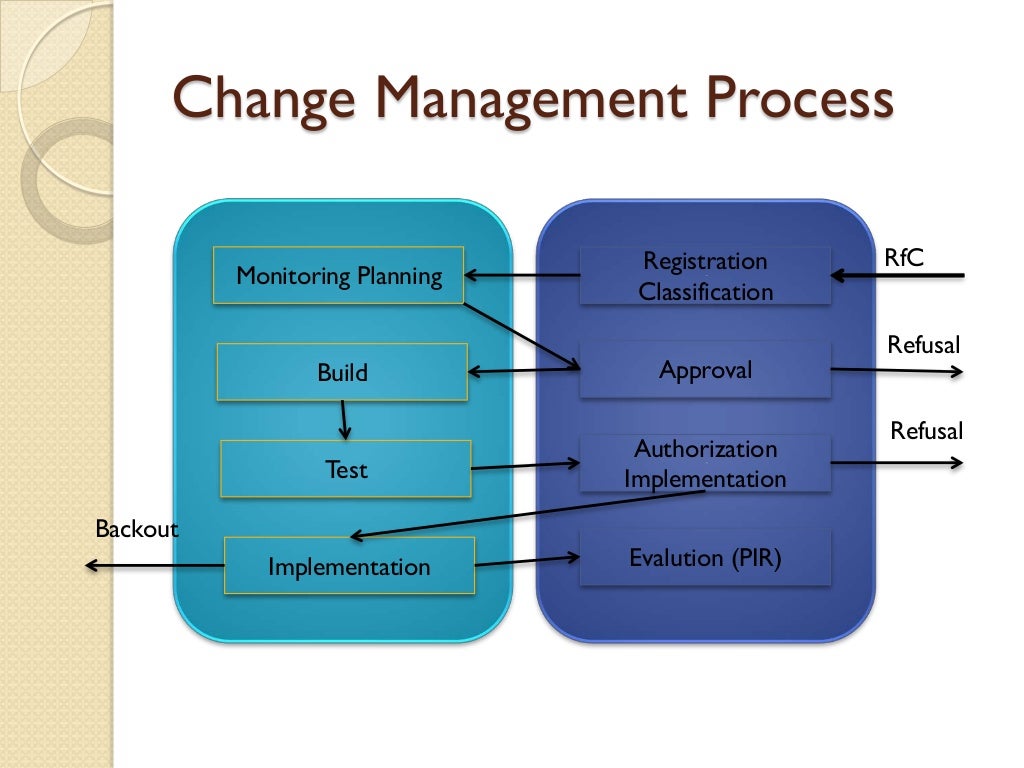 A high value is a sign that your infrastructure is vulnerable to issues such as an error while updating CMDB A high value is a sign that your infrastructure is vulnerable to issues such as an error while updating CMDB |
| Reverted change percentage | Percentage of changes for which a rollback plan was used due to problems during implementation | A high value is an indication of poor change planning |
| Change frequency | Percentage of changes approved by CAB | Indicates the effectiveness of change requests and change plans. A high value is a sign of effective change planning |
| Schedule deviations | Deviations in elapsed and estimated time | Indicates whether the changes were implemented on time and in accordance with the change plan |
| Number of incidents caused by the change | Number of incidents caused by a particular change | Indicates whether the change affects other services.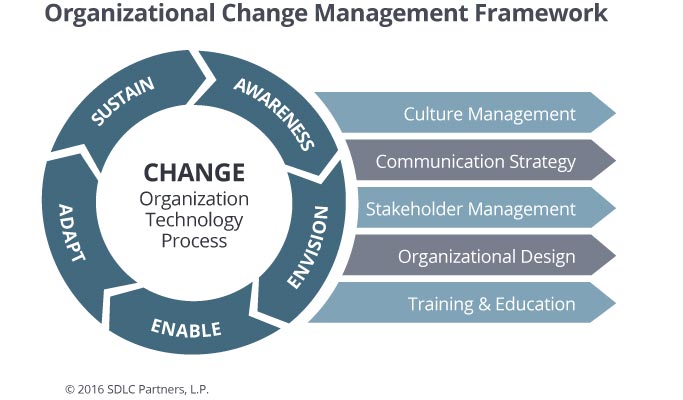 A high value indicates the need for better communication about changes A high value indicates the need for better communication about changes |
| Percentage of completed changes on time | Percentage of changes that were completed on time | Indicates whether the change execution process is operating at optimal efficiency. The higher this value, the more efficient the change management process |
Usage Example Let's look at a change example in detail to understand how you can improve your change management process.
Zylker, a company with a huge number of remote users, decides to head for the cloud.
At the moment, all office applications and company resources are hosted on local systems, so users are provided with access to the network via VPN. Zylker decides to speed up access to data by moving to the use of cloud applications. She chooses Zoho One for her office suite and Office 365 for her email. Some of the company's resources, such as file servers and databases, are still on local systems, so remote users must be granted access to them too.
To meet this requirement, IT is setting up an Azure Active Directory (AD) hybrid environment. It provides a federation server to replicate on-premises AD in cloud-based Azure AD. Now end users, even remote users, can access cloud resources with their AD credentials.
Step 1: Create RFC
The first step is to create a change request and collect the necessary information about the change, such as the type of change, its impact, and urgency, and to establish the roles of the change. The change initiator can easily create a change request through the web portal and select the appropriate change template and change type. The change template collects all the required information using the required fields. Here, the change initiator sets the change type to "normal", selects the appropriate change template, assigns the change roles, and provides a description of why the change is needed.
Step 2: Plan the change
The change initiator then adds the details of the change, such as the reason for the change, details of the impact, roll-out and return plans, and planned downtime. The change initiator also adds all incidents and issues associated with the change to better track the change and its impact. The following are the various plans drawn up by the change initiator.
The change initiator also adds all incidents and issues associated with the change to better track the change and its impact. The following are the various plans drawn up by the change initiator.
Commissioning plan
- Get Azure AD and Office 365 accounts.
- Configure Active Directory Federation Services (ADFS).
- Start synchronization between on-premises AD and Azure AD.
- Set up single sign-on.
- Synchronize on-premises Exchange and Office 365.
Revert plan
Since the existing configuration is not affected, revert to the old configuration and resume service.
Planned downtime: 12 hours.
Step 3: Get Appropriate Approvals
The Change Manager creates a CAB to review the change plan and make recommendations about whether to implement the change or change the plan. Since this is a massive change, approvals are required from various officials in different functional areas. Below is a list of CABs and their members involved in the approval process.
Below is a list of CABs and their members involved in the approval process.
- Executive CAB:
- IT Director
- Technical Director
- CFO
- Chief Executive Officer
- Technical CAB:
- Service Delivery Manager
- Production Director
- Information Security Director
- Data Protection Officer
- Business CAB:
- Business Administration Director
- HR Director
- Director of Business Relations
Step 4: Implement Change Correctly
Zylker uses tasks to track implementation. Tasks are assigned to different technicians, and the order in which they are completed is specified using task dependencies. The change owner can easily track the progress of the change and manage tasks centrally.
Here's how Zylker broke down the implementation into tasks to make it easier to track and manage the implementation of the change:
- Provisioning Office 365 and Azure AD.
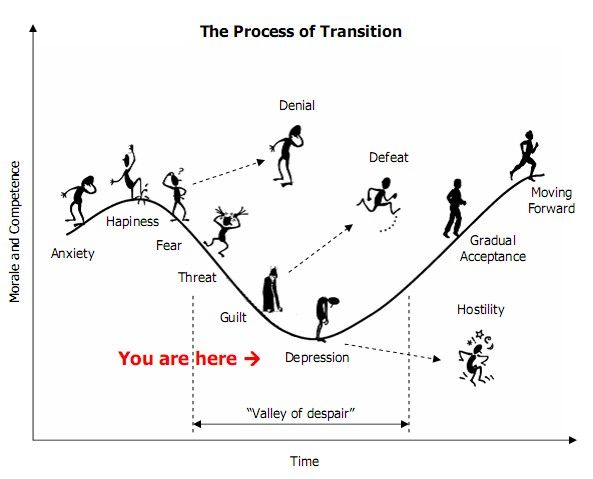
- Ingest server setup.
- Starting data transfer.
- Configure Azure AD proxies.
- Data integrity check.
Step 5: Follow the Plan
The Change Owner/Change Manager then reviews the implementation of the change for deviations from the plan. Before a change is considered successful, any deviations should be reported and corrected.
Step 6: Closing the change request
The change is then closed and assigned a closing code based on the nature of the change closure.
Step 7: Check Metrics
The Change Manager measures certain KPIs to determine the level of effectiveness of the change process and identify areas for improvement.
List of Change Management Features
Here is a list of features you should consider when choosing a help desk tool. Having these features in place will help you establish an effective change management process in your organization.
Change management
Create and register changes
- Create changes from incidents and problems and transfer the necessary information.
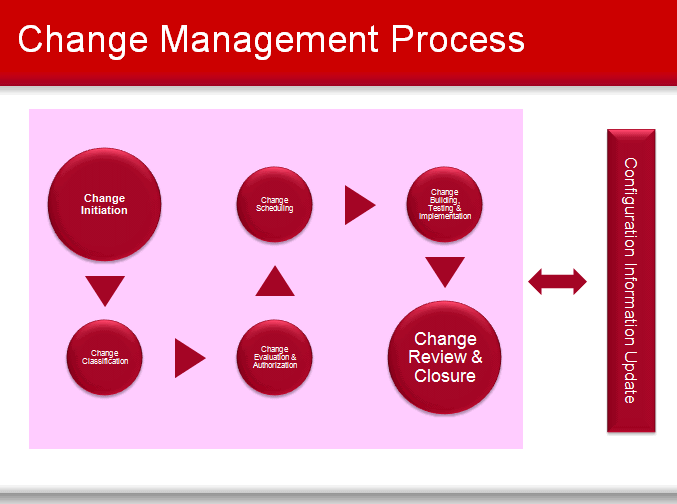
- Gather the information you need with custom change templates.
- Create different types of changes and create unique workflows for each type.
- Involve appropriate process participants such as Change Owner, Approver, Line Manager, and Change Review Owner using change roles.
Change planning and evaluation
- Create detailed change plans that include impact analysis, as well as go-live, return, and downtime plans.
- Maintain a checklist of important milestones.
Change approvals
- Create multiple CABs.
- Set up multiple approval levels. An indication whether the RFC needs approval by all CAB members or just one of them.
- Give the change manager the final say in approving the change.
- Bypass approvals from the change manager and change approver by automatically approving the change when recommended by all CAB members.
- Specifying end users as service request approvers.

Coordinating change implementation
- Dividing changes into tasks and using work logs to estimate the time it will take for the change implementation team to complete actions.
- Optimize implementation by creating projects from a change or linking a change to existing projects.
- Track all incidents and issues that caused or caused the change.
- Plan downtime and notify key process participants about it.
- Keep stakeholders informed through regular notifications.
Check and close change
- Documentation of post-implementation review (PIR).
Change workflows
- Create separate workflows for different types of changes and processes with different levels of complexity and functionality.
- Set up various actions such as conditions, switches, notifications, field updates, and approvals during the transition between stages.
- Compose change workflows on a layout by dragging and dropping elements.

Glossary
Change
Add, modify, or remove anything that could directly or indirectly affect the services.
Change Panel (CAB)
A group of various stakeholders who make recommendations for change and approve the change plan.
Change conflict
A situation in which the implementation of two or more changes is inadvertently scheduled at the same time, preventing the implementation of one of them.
Change management
The process of implementing changes with a minimum of disruption and conflict.
Change roles
Delegate responsibility for different aspects of the change to different people in the organization.
Closing code
Used to record the nature of the change being closed, such as "failed" or "successful".
Configuration Management Database (CMDB)
Store of all configuration items and their relationships.
Continuous improvement of services
The process of identifying and correcting areas that can be improved to improve the quality of services.
Downtime
A period of time during which a particular service is unavailable.
Incident
Unplanned interruption or degradation of IT service. The failure of a configuration item, even if it has not yet affected the operation of a service, is also considered an incident (for example, a failure of one of the disks in the array).
Problem
Cause or potential cause of one or more incidents.
Post-implementation review
The process of evaluating whether the change plan was carried out without deviation and reviewing the implementation to determine if any changes are needed.
Change Request (RFC)
The process of initiating a change with a good reason.
Risk assessment
The process of assessing the potential risks associated with a change.
Help Desk
The link between service providers and users of an organization.
Find out how ITSM can significantly improve the efficiency of your business.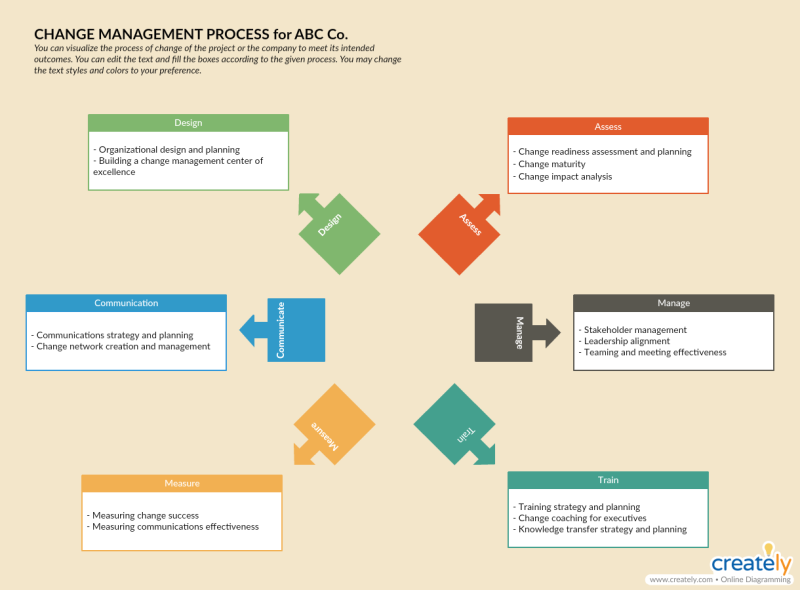
Now that you have an understanding of change management and how to implement effective change, it is important to learn other ITSM processes to manage your organization's IT infrastructure comprehensively and create a coherent ITSM system. Download a free copy of ITSM resources.
-
Incident Handbook
-
Helpful guide for smart IT service management
-
ITSM
holistic system
We hope you enjoyed our guide and got a good idea of what change management is and how you can use it in your organization. If you still have questions, we invite you to watch a series of in-depth videos showing how to use change management in your daily ITSM operations.
Skip to video section
For any questions you can contact me at [email protected] or on Twitter and LinkedIn hesaplarımdan bana ulaşabilirsiniz.
Zoho Corp. All rights reserved.
How we become different or necessary steps in the process of changing our behavior
Year of publication and journal number:
2017, No.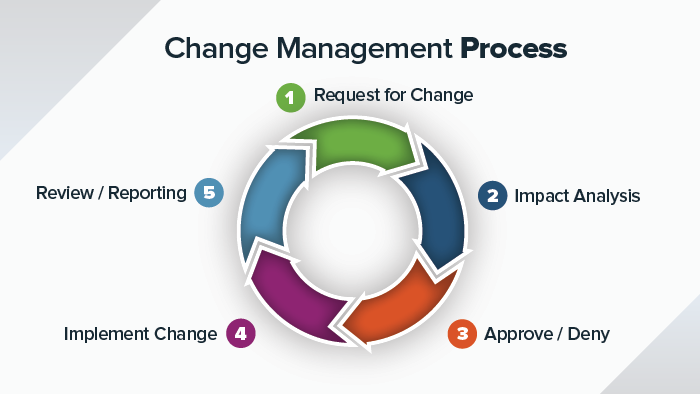 1
1
Author:
Yagnyuk K.V.
Abstract
An informative article on the transtheoretical model of behavioral change by Prochazka, Norcross and Di Clemente. It tells about the stages through which a person goes in the process of changing his behavior.
Keywords : behavioral change, stages of change, transtheoretical model.
A huge number of people have been trying for years to change something in their lives, struggling to find an effective solution to their problems. According to the transtheoretical model of behavior change by American psychotherapists James Prochazka, John Norcross and Carlo Di Clemente, change is a process that has a number of stages. They can not be skipped, everyone has to go the same way. Anyone who has tried to change some of their addictions is familiar with the situation when, in order to allay feelings of guilt and anxiety, we make a promise to ourselves to start a “new life” the very next day. And quite often we do that. But usually the action without a preparatory stage lasts a day, two, a maximum of a week. Experience shows that many of those who make a promise to themselves to start a new life at some point report doing so for a number of years before they manage to achieve lasting change. Empirical research shows that to really change your behavior, you need a solid foundation, which is laid by gradual, authentic progression through the stages of change. What are these necessary steps in the process of changing your problematic behavior? Let's look at them in more detail.
And quite often we do that. But usually the action without a preparatory stage lasts a day, two, a maximum of a week. Experience shows that many of those who make a promise to themselves to start a new life at some point report doing so for a number of years before they manage to achieve lasting change. Empirical research shows that to really change your behavior, you need a solid foundation, which is laid by gradual, authentic progression through the stages of change. What are these necessary steps in the process of changing your problematic behavior? Let's look at them in more detail.
Resistance to change
In most cases, the starting position is active resistance to change. The hallmark of this stage is the resistance to admitting there is a problem. Those at this stage may believe that they have flaws, but do not agree that they need to change something in themselves. However, it is often obvious to people from their immediate environment - family members, friends, colleagues, that the problem is very serious.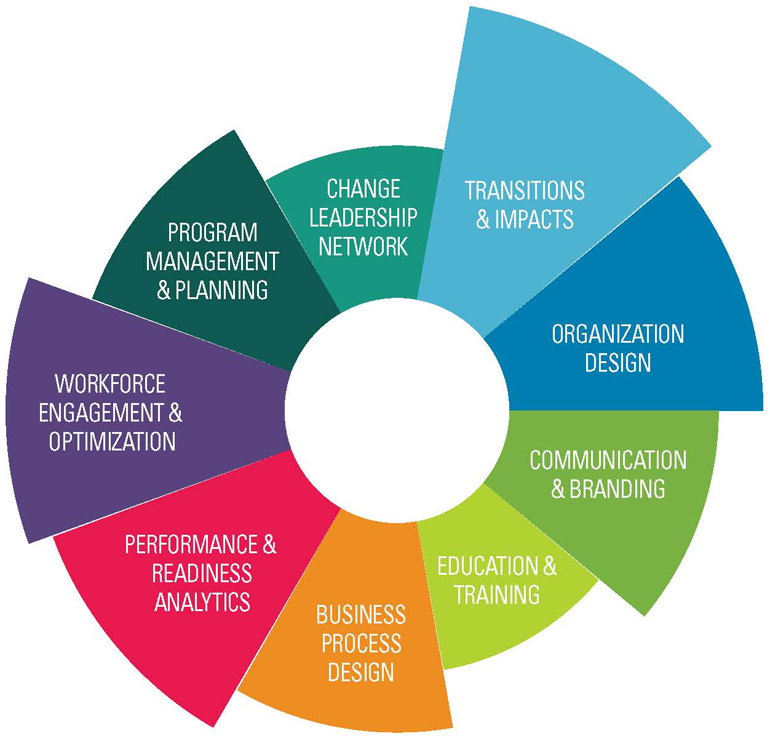 At this stage, individuals are not sufficiently aware of their problems, deny them, and in one way or another defend themselves against attempts by others to point them out. When such people come to a psychotherapist, then, as a rule, they do it under the influence of others. Usually they are pushed to change by a marriage partner or a parent. "Resistant" may give in to pressure and pretend that they recognize the problem and want to change, but, in reality, they are not at all considering changing their behavior in the foreseeable future. As you know, knowledge is power, so the first step towards conscious change is to recognize the problem, realize its negative aspects and the consequences of your harmful behavior.
At this stage, individuals are not sufficiently aware of their problems, deny them, and in one way or another defend themselves against attempts by others to point them out. When such people come to a psychotherapist, then, as a rule, they do it under the influence of others. Usually they are pushed to change by a marriage partner or a parent. "Resistant" may give in to pressure and pretend that they recognize the problem and want to change, but, in reality, they are not at all considering changing their behavior in the foreseeable future. As you know, knowledge is power, so the first step towards conscious change is to recognize the problem, realize its negative aspects and the consequences of your harmful behavior.
Thinking
At this stage, people recognize the fact of the problem and begin to seriously consider ways to solve it. They are trying their best to understand its essence, to get to the bottom of the reasons, to consider possible solutions. But they are still far from translating these intentions into behavior. Ponderers consider various options, making sure many times that the problem will not be solved by itself. At this stage, people can linger for a long time - often for years. To move forward, it is very important to avoid the trap of mental chewing, that is, chronic overthinking, which, in reality, leads nowhere. Seriously considering the consequences of the existing problem, angry at themselves for being in this position, contemplatives gradually come to a firm decision to take action. Timid, trial actions become a step towards the transition to the next stage. The end of the contemplation phase is a time of anticipation, anxiety, and excitement.
Ponderers consider various options, making sure many times that the problem will not be solved by itself. At this stage, people can linger for a long time - often for years. To move forward, it is very important to avoid the trap of mental chewing, that is, chronic overthinking, which, in reality, leads nowhere. Seriously considering the consequences of the existing problem, angry at themselves for being in this position, contemplatives gradually come to a firm decision to take action. Timid, trial actions become a step towards the transition to the next stage. The end of the contemplation phase is a time of anticipation, anxiety, and excitement.
Preparing
Most of those who are in the preparatory phase are planning to go into action as early as next month and are making final adjustments to their plans. They didn't necessarily get over their indecisiveness. They still have to convince themselves that their decision is the only right one. The preparation stage is characterized by the unification of efforts and the preliminary actions taken.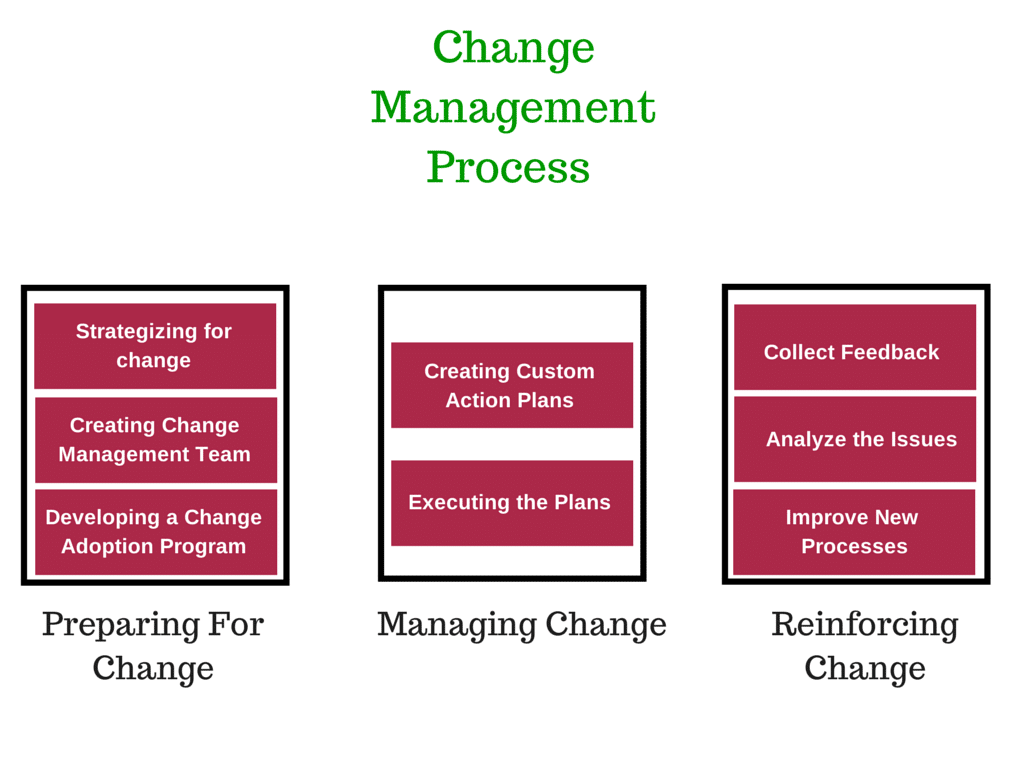 This leads to some success in eliminating problem behaviors, but they have not yet reached the desired result, for example, a person who wants to quit smoking may significantly reduce smoking, but has not yet completely abandoned it. Like any person who is on the threshold of important accomplishments, individuals in the preparation stage need to determine their goals and priorities, because change requires effort, attention and energy. To move to the stage of action, this goal must become a matter of paramount importance for them. They must think in detail and decide to stick to the action plan they have developed.
This leads to some success in eliminating problem behaviors, but they have not yet reached the desired result, for example, a person who wants to quit smoking may significantly reduce smoking, but has not yet completely abandoned it. Like any person who is on the threshold of important accomplishments, individuals in the preparation stage need to determine their goals and priorities, because change requires effort, attention and energy. To move to the stage of action, this goal must become a matter of paramount importance for them. They must think in detail and decide to stick to the action plan they have developed.
Action
At this stage, individuals move from thinking and talking to doing. Of course, actions require significant volitional efforts, energy and time costs. In order to interrupt habitual, problematic patterns of behavior and avoid breakdowns and relapses, individuals have to simultaneously monitor the pitfalls that can get in the way of changing their behavior.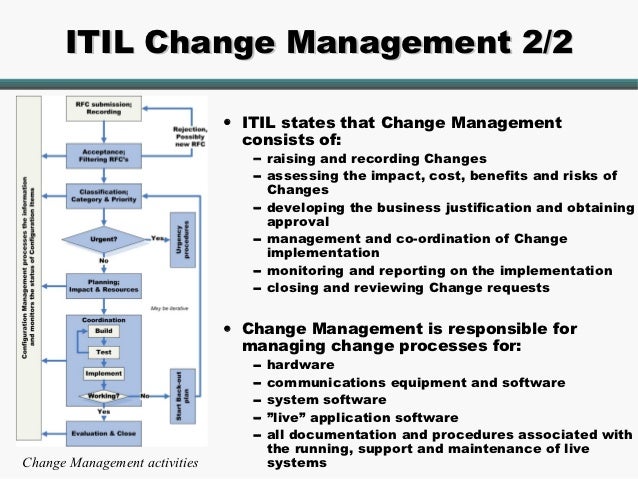 The action phase lasts several months. The first two months are the most dangerous period in terms of relapse. Saving changes builds on the work done in the previous steps. Success in changing one's behavior is deservedly accompanied by a sense of pride in oneself (“Anyone can talk about changes, but I take certain actions to change”). The changes achieved at this stage are the most noticeable to other people, therefore they receive the maximum external recognition and support.
The action phase lasts several months. The first two months are the most dangerous period in terms of relapse. Saving changes builds on the work done in the previous steps. Success in changing one's behavior is deservedly accompanied by a sense of pride in oneself (“Anyone can talk about changes, but I take certain actions to change”). The changes achieved at this stage are the most noticeable to other people, therefore they receive the maximum external recognition and support.
Save
Save is not a static position, but a continuation of change. Without a strong intention to build on what has been achieved, relapse is almost 100% likely, so the transition from action to implement change to maintain change is critical. The goal of the change retention phase is nothing less than a permanent change that becomes part of the personality and a new way of life. In this stage, individuals work to prevent relapse and reinforce the change that has already been achieved.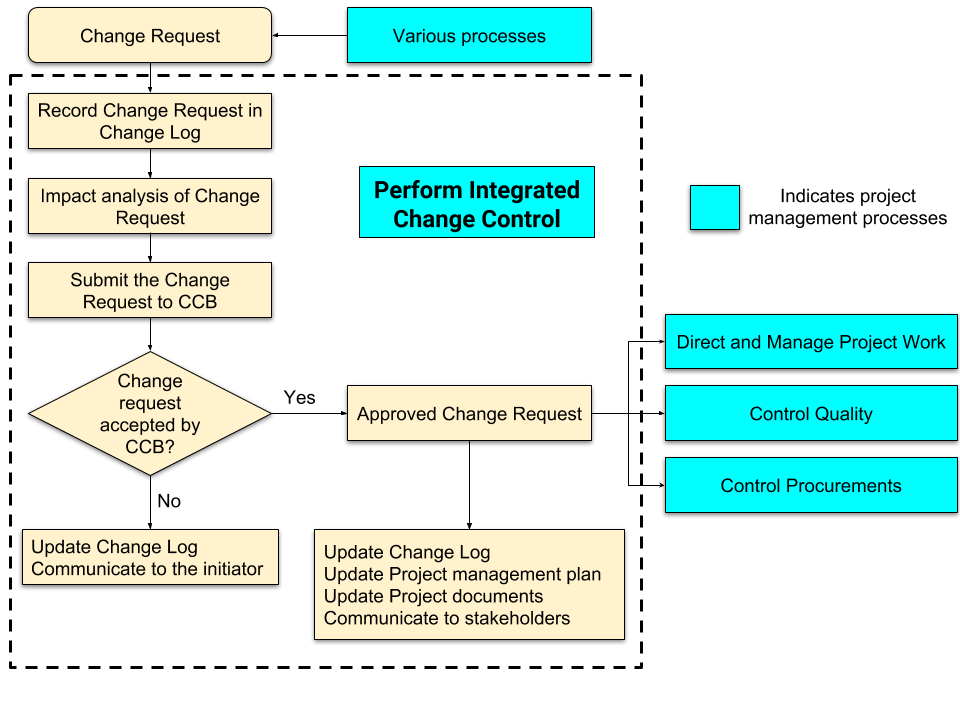 In the case of chronic problems, this stage lasts after the initial actions from six months to an indefinite period of time. For serious chronic problems such as alcohol or drug addiction, the retention stage can be lifelong. A distinctive feature of conservation is the stabilization of behavioral change and the prevention of relapse.
In the case of chronic problems, this stage lasts after the initial actions from six months to an indefinite period of time. For serious chronic problems such as alcohol or drug addiction, the retention stage can be lifelong. A distinctive feature of conservation is the stabilization of behavioral change and the prevention of relapse.
As already mentioned, when individuals attempt to abandon chronic problem behaviors, relapses and re-stages occur quite frequently. With serious chronic problems such as addictive behavior, linear progression through the stages is a possible but very rare phenomenon, rather an exception to the rule. In the event of a relapse, individuals regress to an earlier stage, such as the stage of preparation or reflection. A relapse is usually accompanied by feelings of frustration, shame, and guilt. Those who are very sensitive to relapse and see themselves as failures may find themselves demoralized and driven away from thoughts of behavioral change. As a result, they return to the stage of resistance to change and can remain there indefinitely.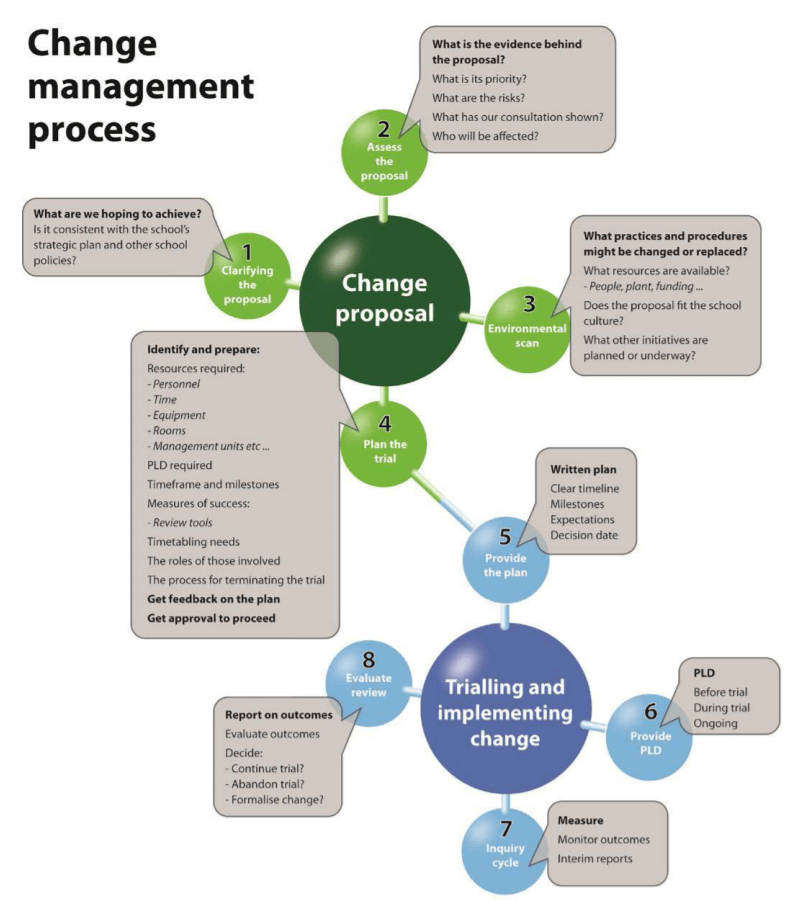 However, as experience shows, most of those who fail do not go around endlessly in circles and do not return to the starting point, losing everything they have acquired. Through their attempts, they are more likely to learn something and next time they try to avoid previous mistakes by behaving differently. That is why the authors of this model prefer to use the term “recycle” rather than relapse. The repetition provides an opportunity to learn. Those who act and fail are more likely to succeed next time.
However, as experience shows, most of those who fail do not go around endlessly in circles and do not return to the starting point, losing everything they have acquired. Through their attempts, they are more likely to learn something and next time they try to avoid previous mistakes by behaving differently. That is why the authors of this model prefer to use the term “recycle” rather than relapse. The repetition provides an opportunity to learn. Those who act and fail are more likely to succeed next time.
The completion stage is the ultimate goal of all those who work on themselves. At this stage, the old problematic behavior or addiction is no longer a temptation or threat. Problem resolution characterizes the state when the person is no longer tempted to revert to the problem behavior and no longer needs to make efforts to keep from relapse. He won the battle and went through the whole cycle to the end.
For those whose problem remains unresolved for a long time spent on its own to overcome it, it's time to think about contacting a specialist.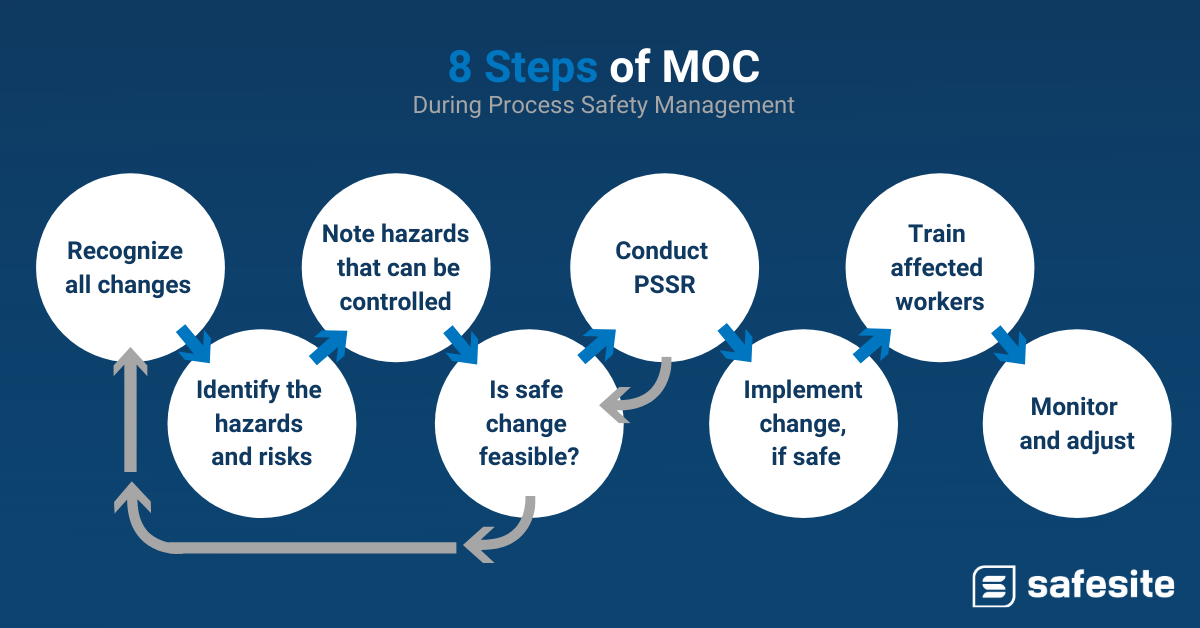 Any person embarking on the path of self-change needs supportive relationships to help them stay hopeful and meet the challenges of each stage. A counseling psychologist or psychotherapist has the necessary knowledge and skills and can help you change your life for the better.
Any person embarking on the path of self-change needs supportive relationships to help them stay hopeful and meet the challenges of each stage. A counseling psychologist or psychotherapist has the necessary knowledge and skills and can help you change your life for the better.
The further clients have progressed through the stages of change on their own, the more progress they can make in psychotherapy. If within a month of psychotherapy a client who is at the stage of resistance to change has moved to the next stage, then studies show that the likelihood that he will take certain actions to change himself over the next 6 months increases significantly.
As we Become Others or the Necessary Steps in the Process of Changing our Behavior
Annotation
Informational article about Prochazka, Norcross and Di Clemente’ transtheoretical model of behavioral change. It tells about the stages in the process of changing a human behavior.